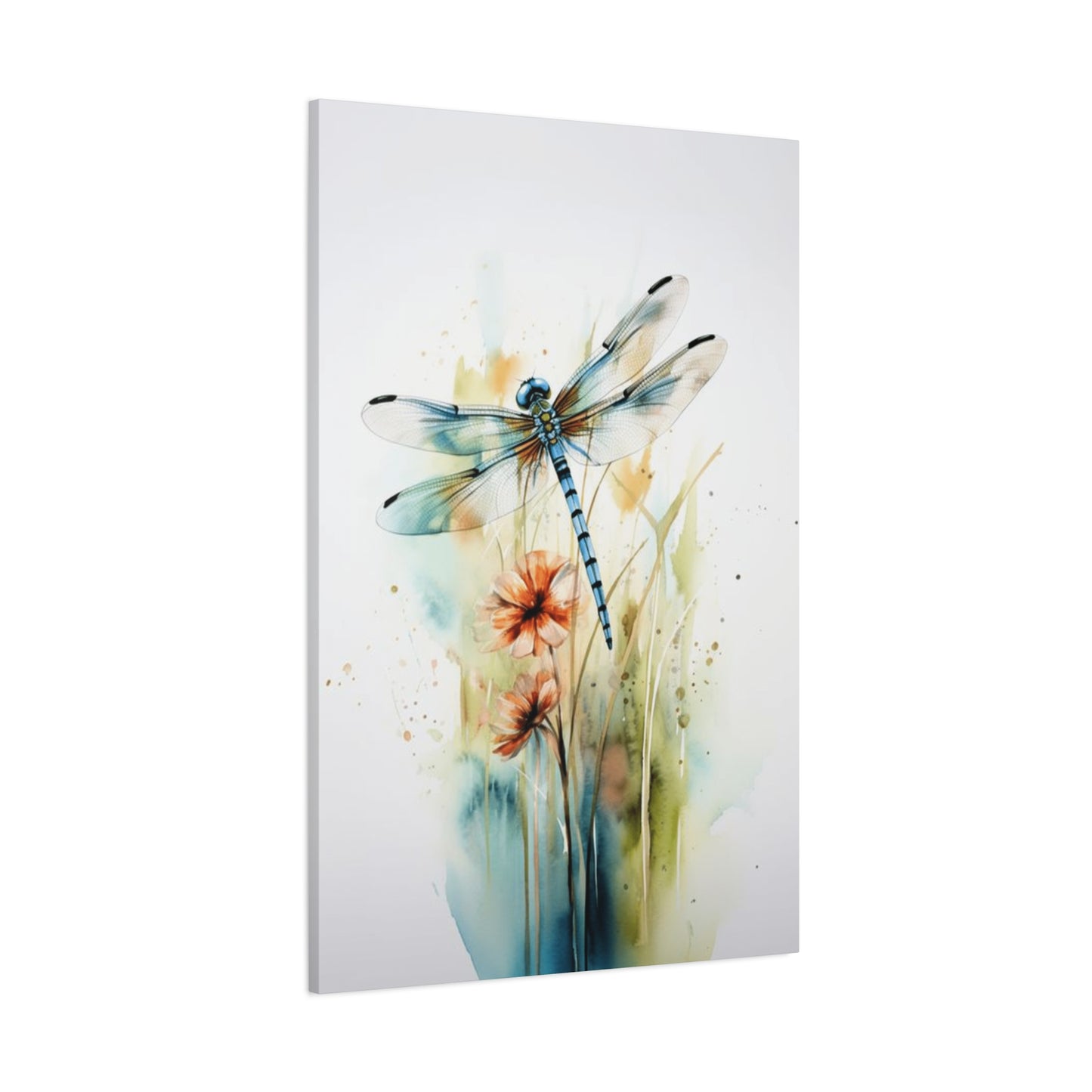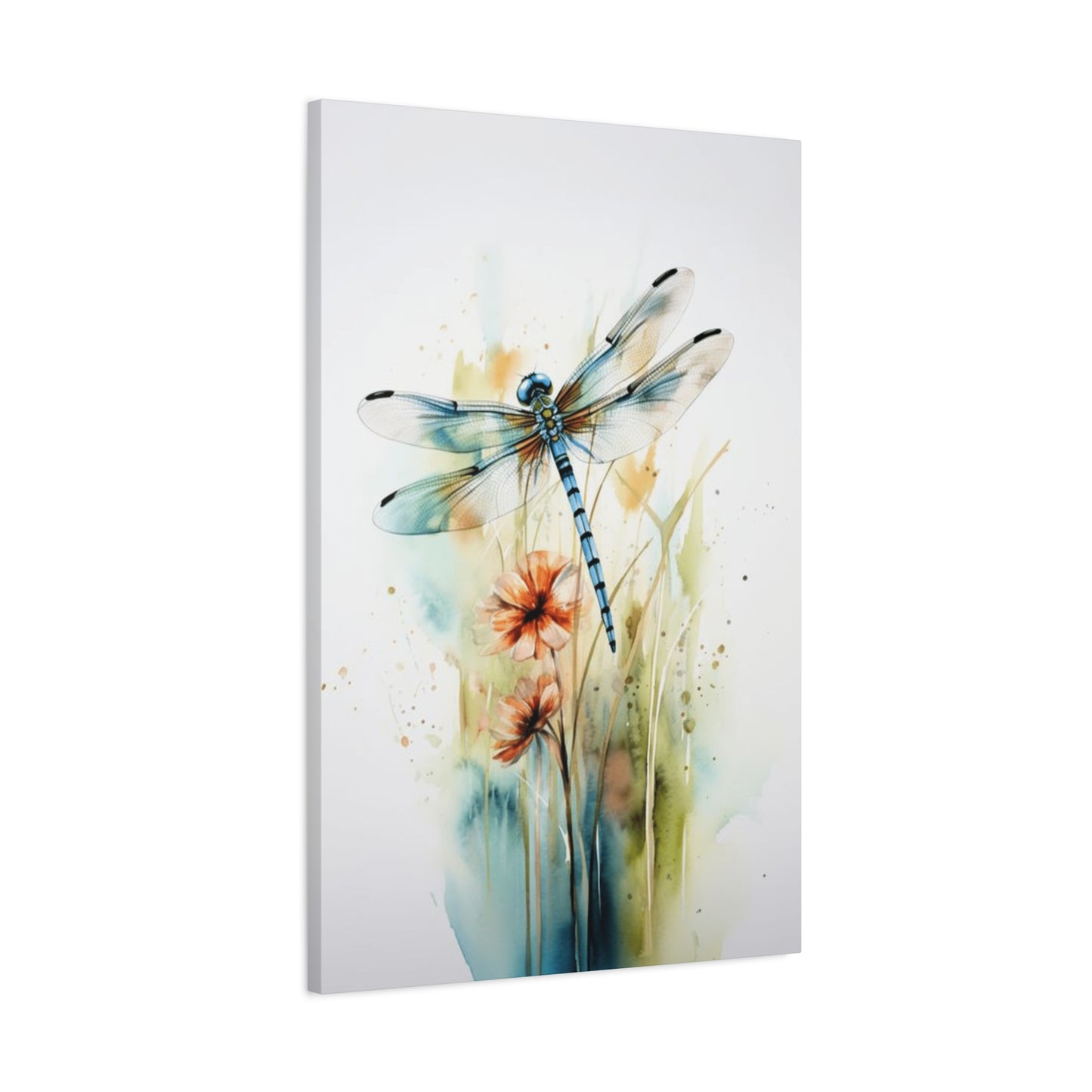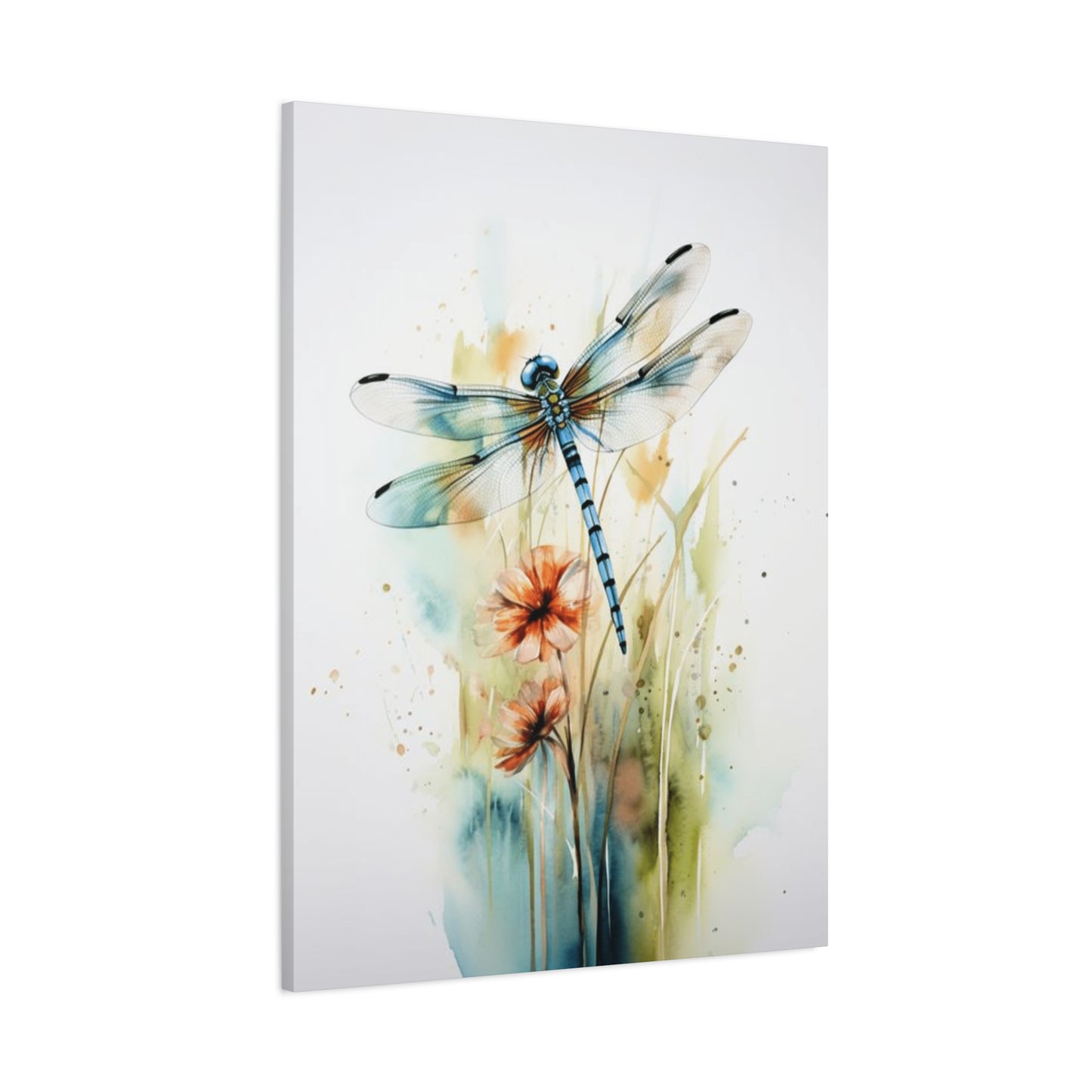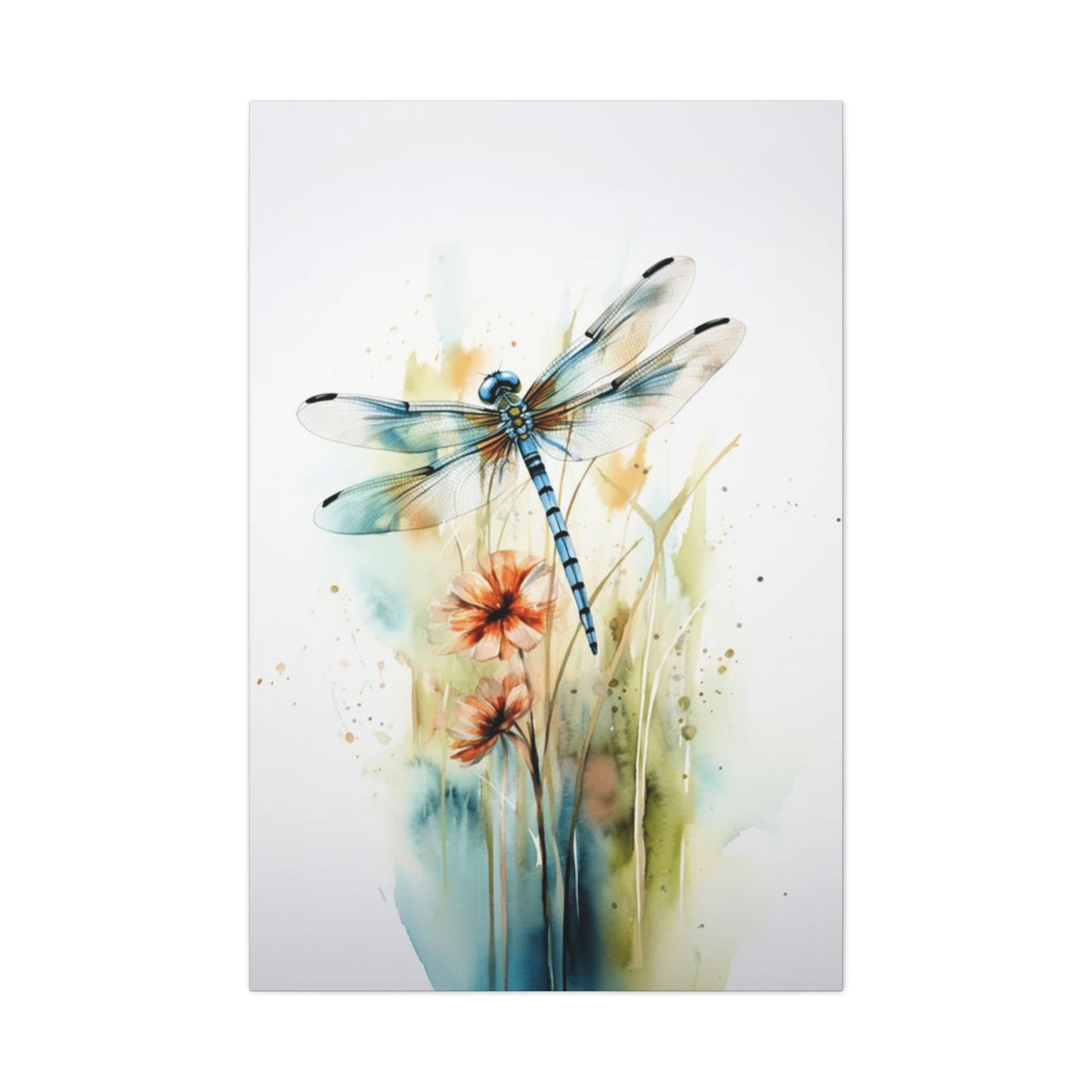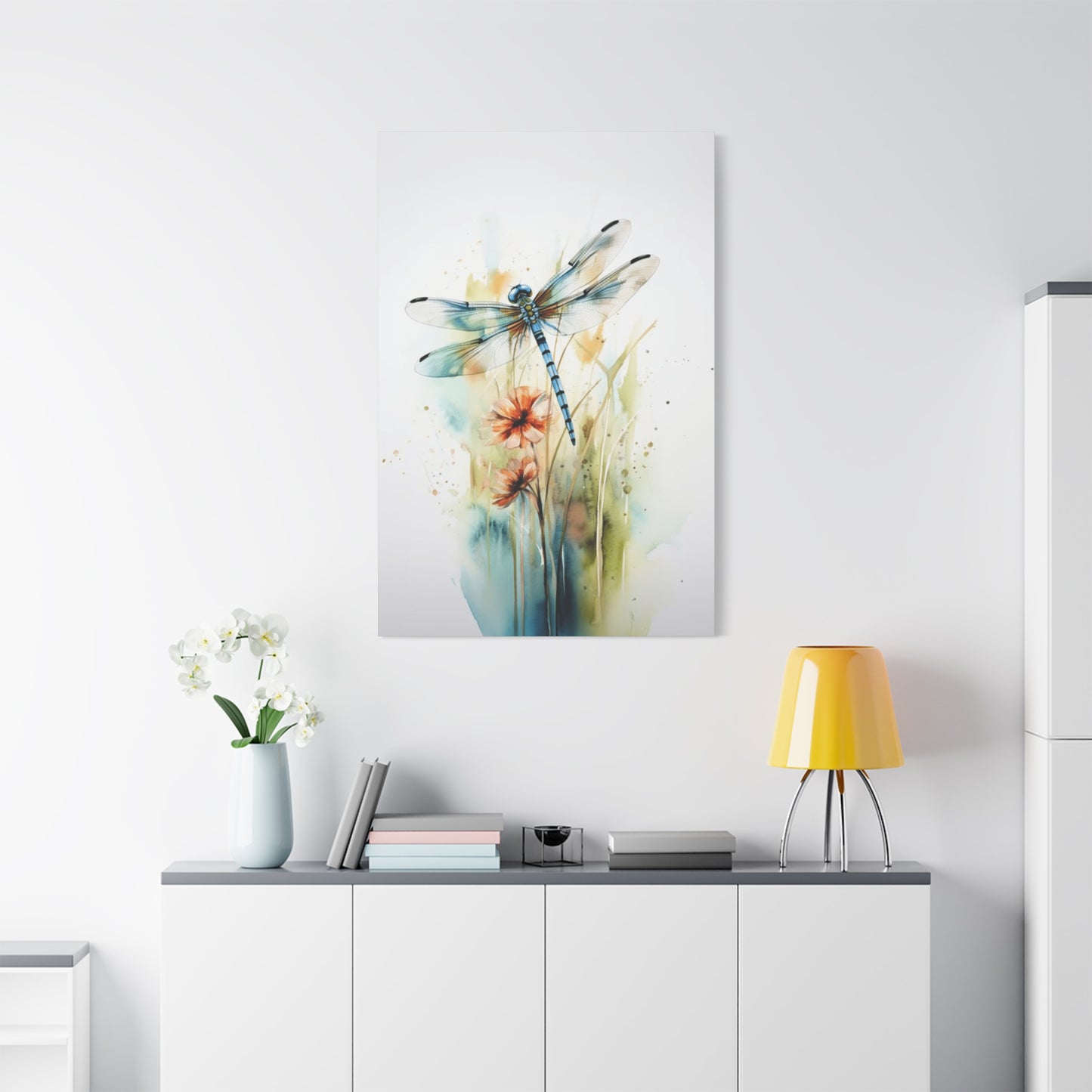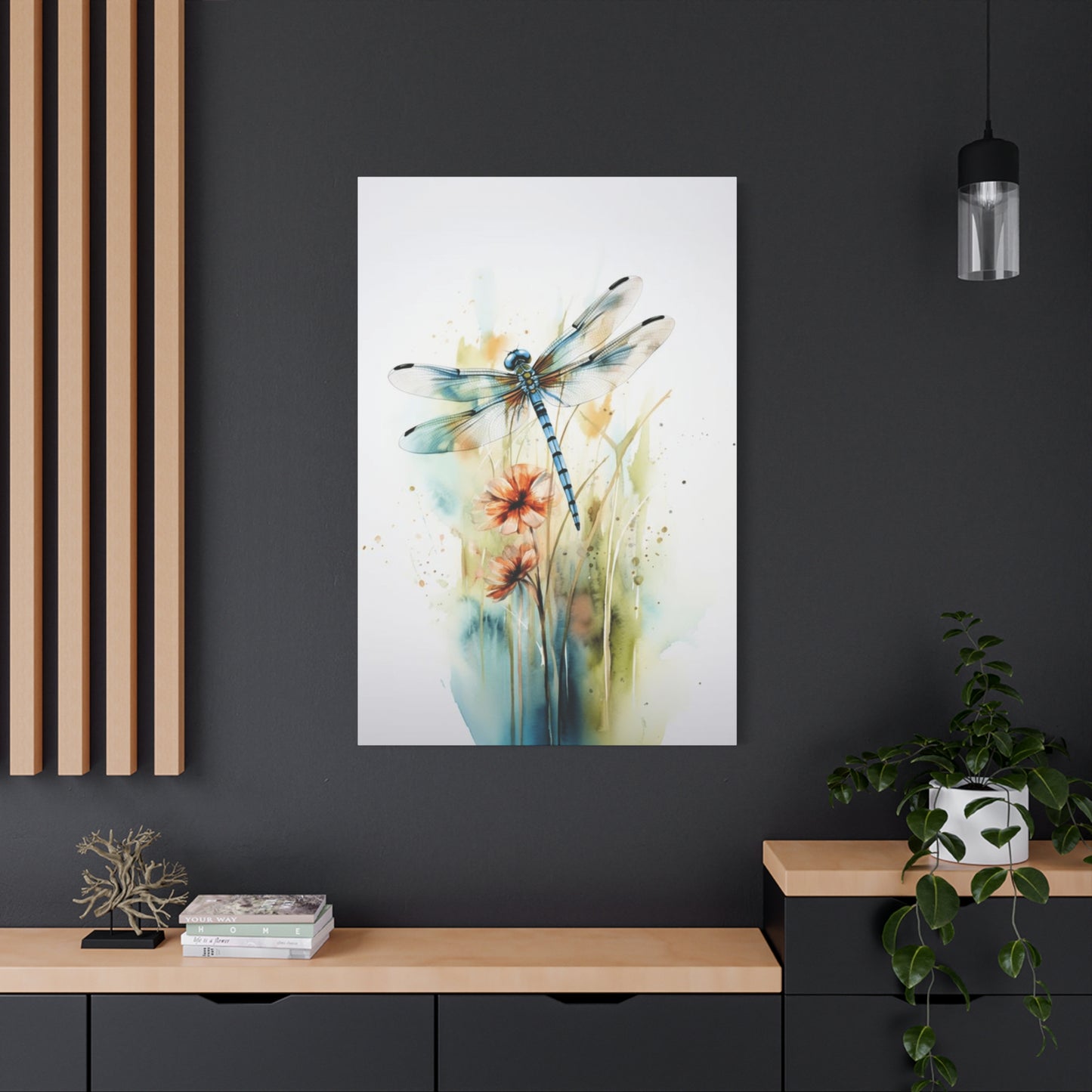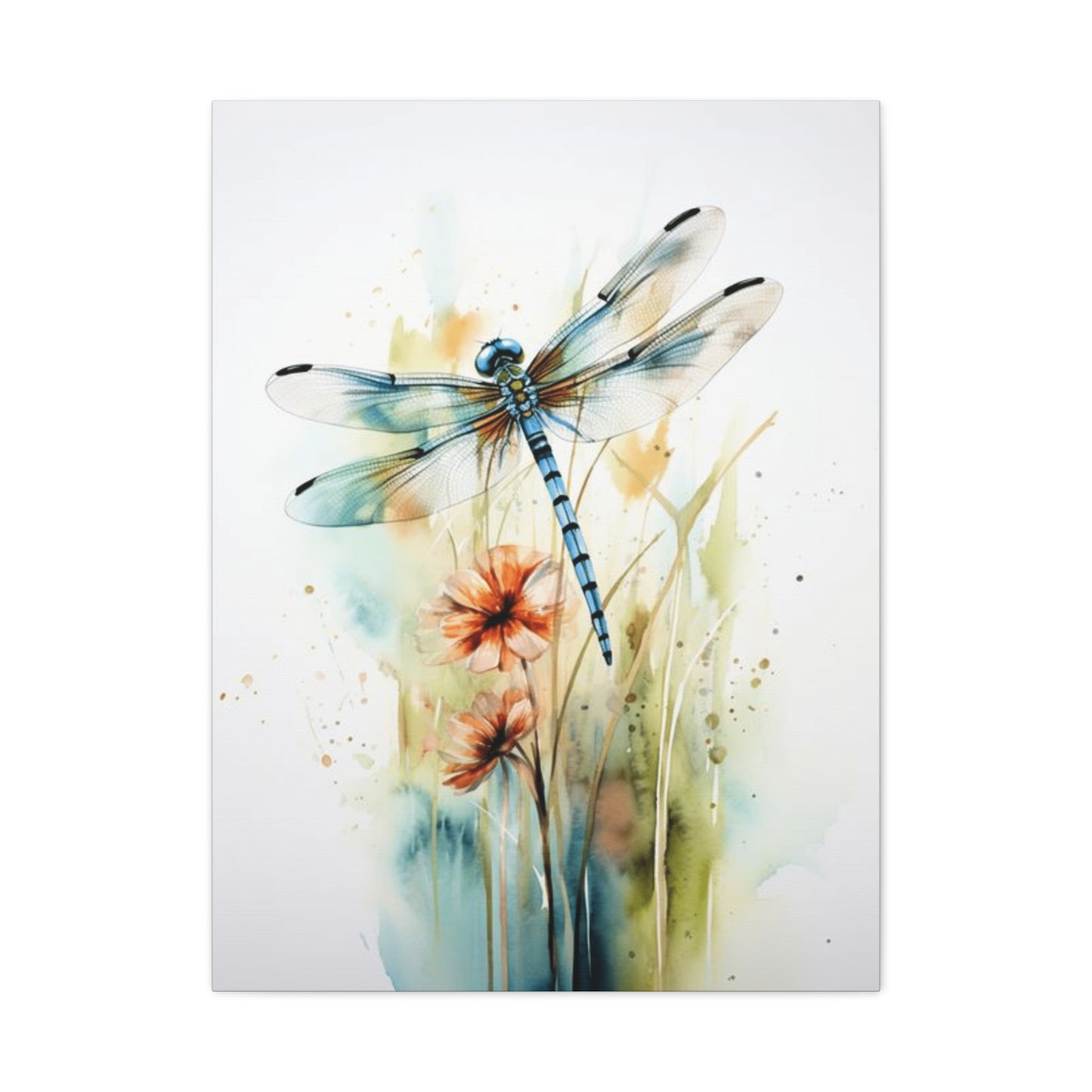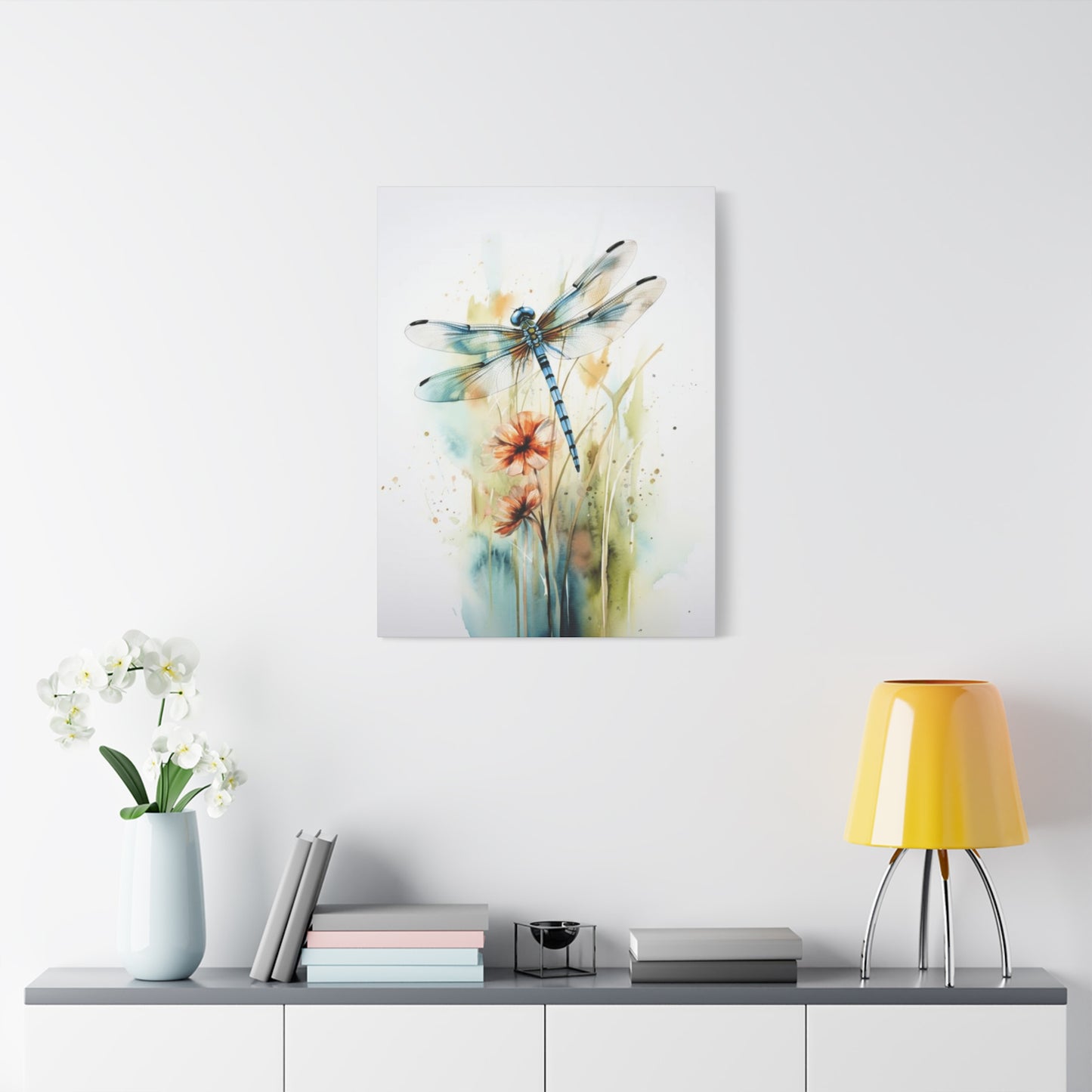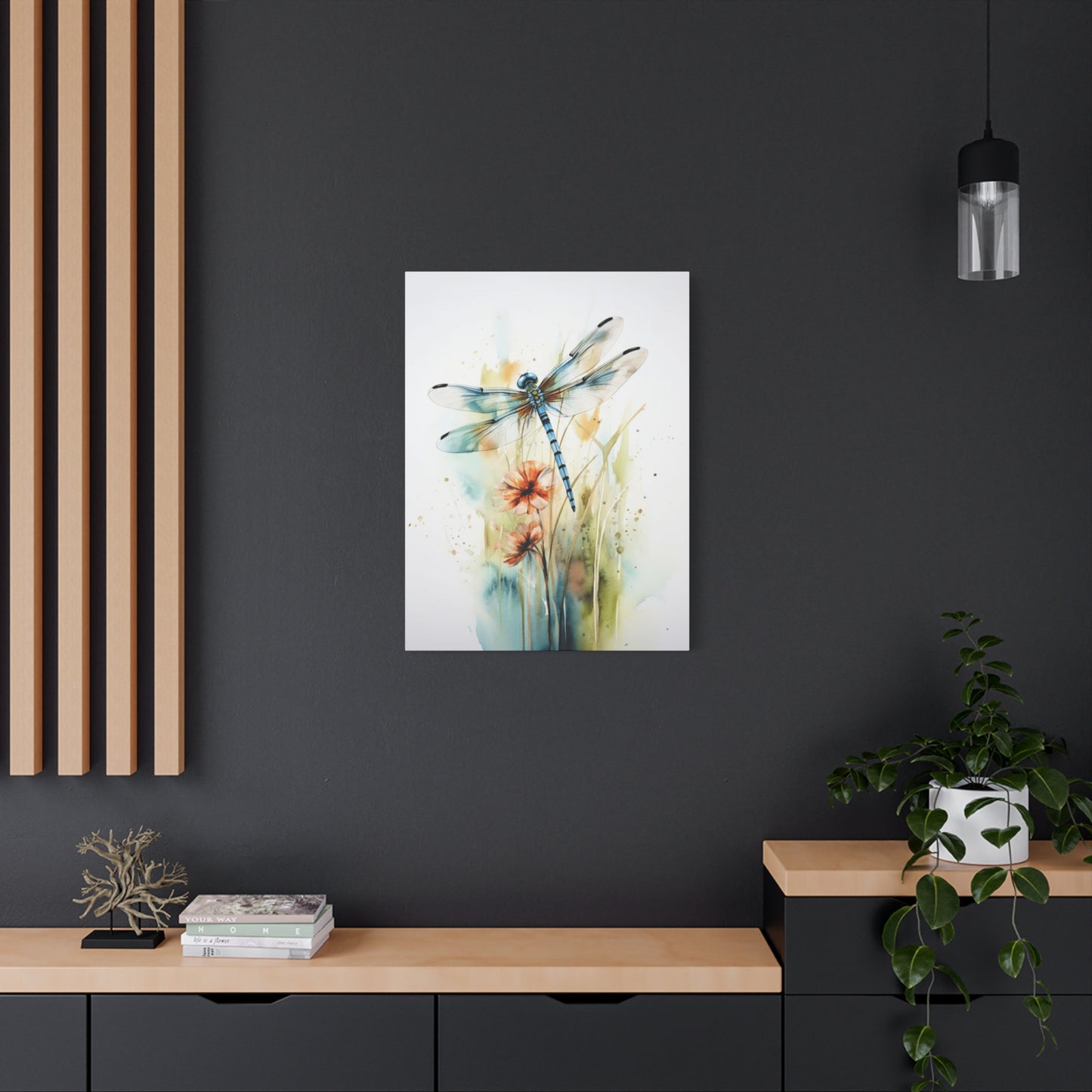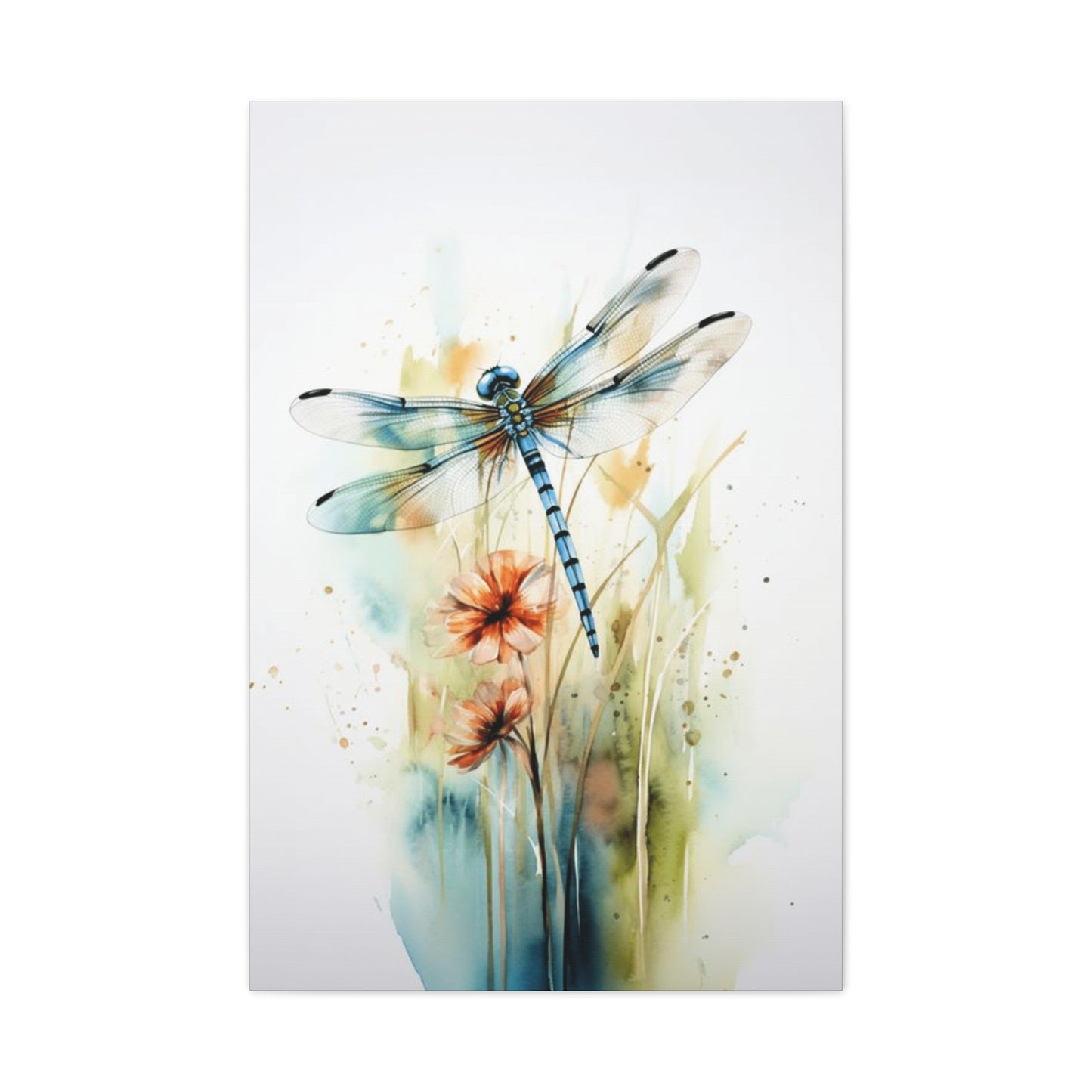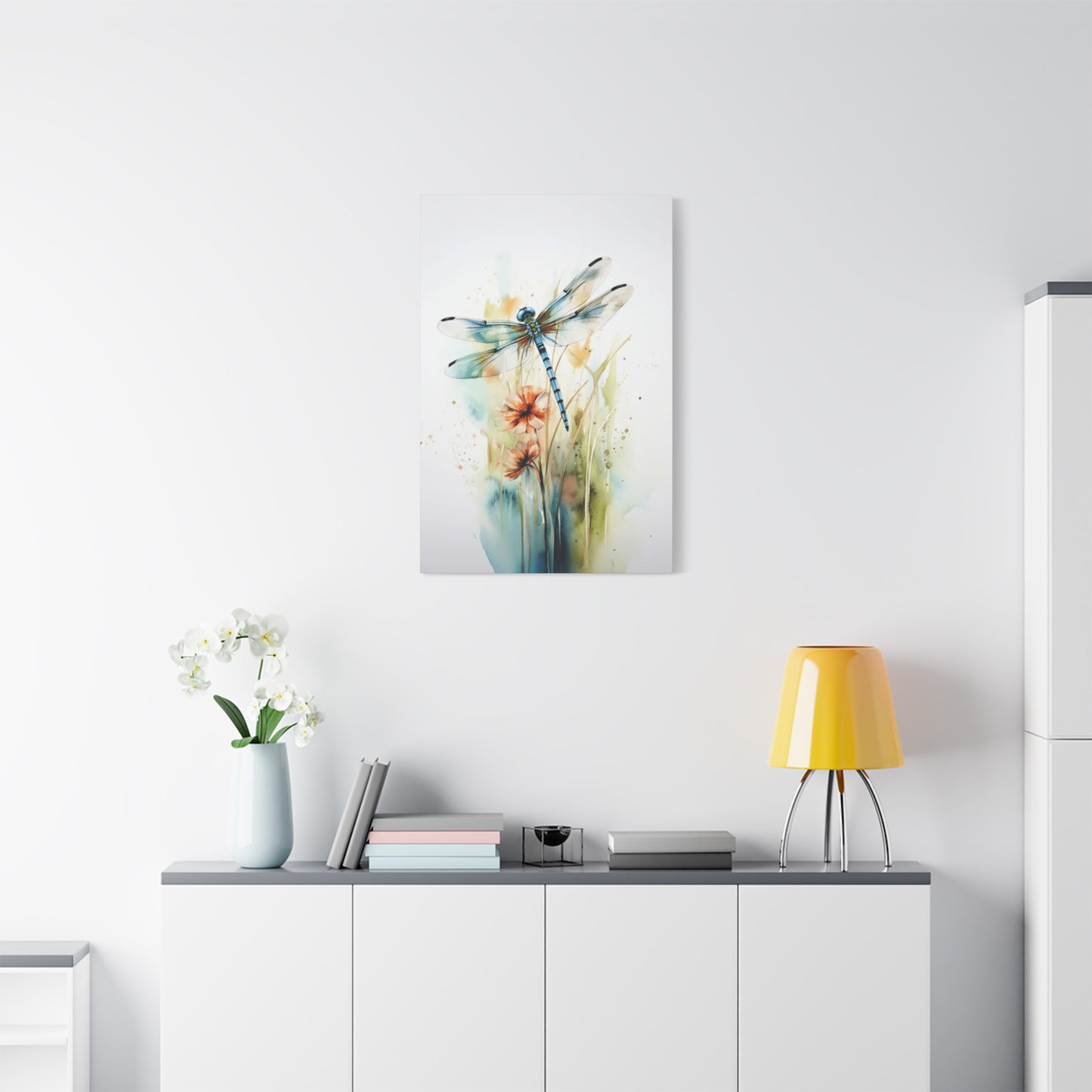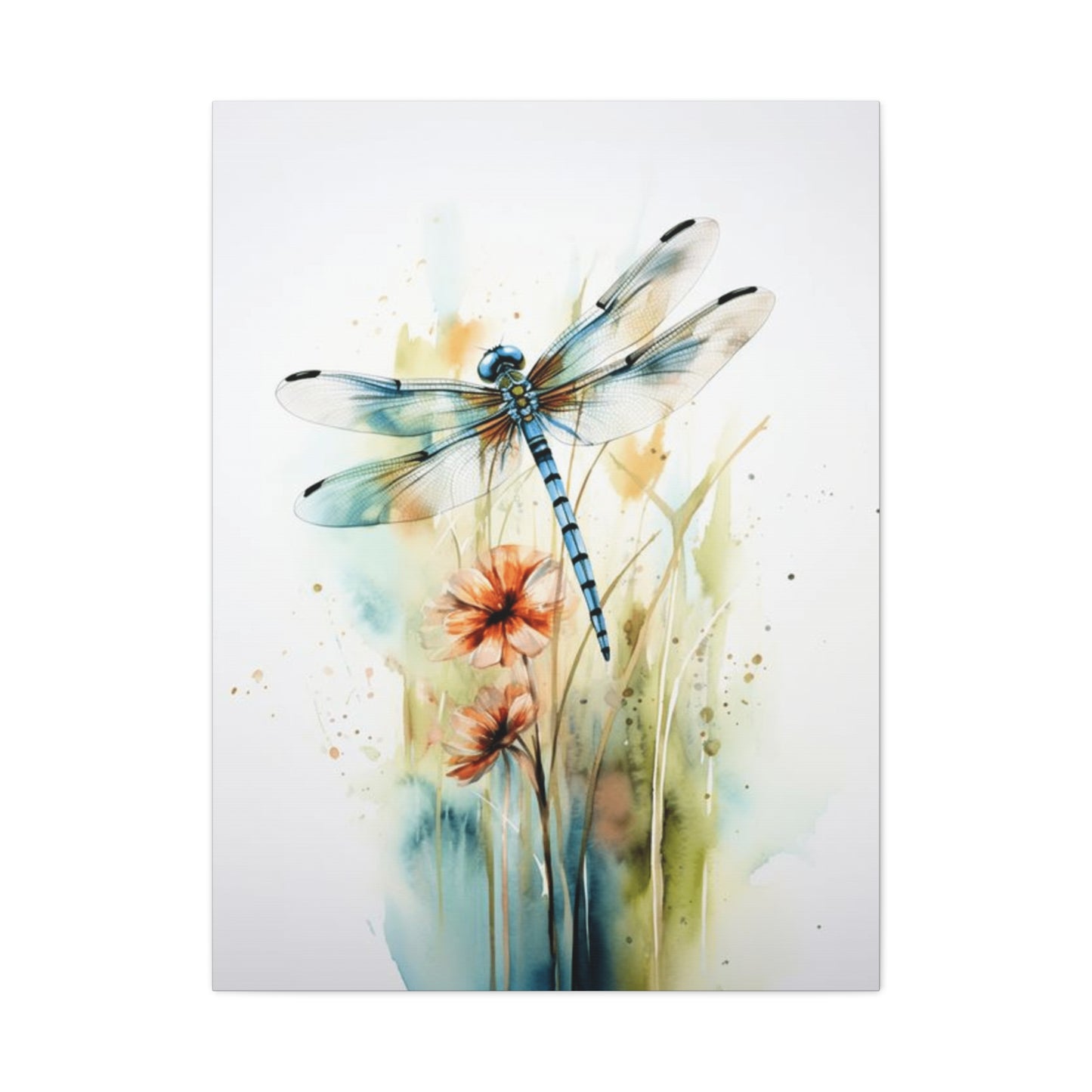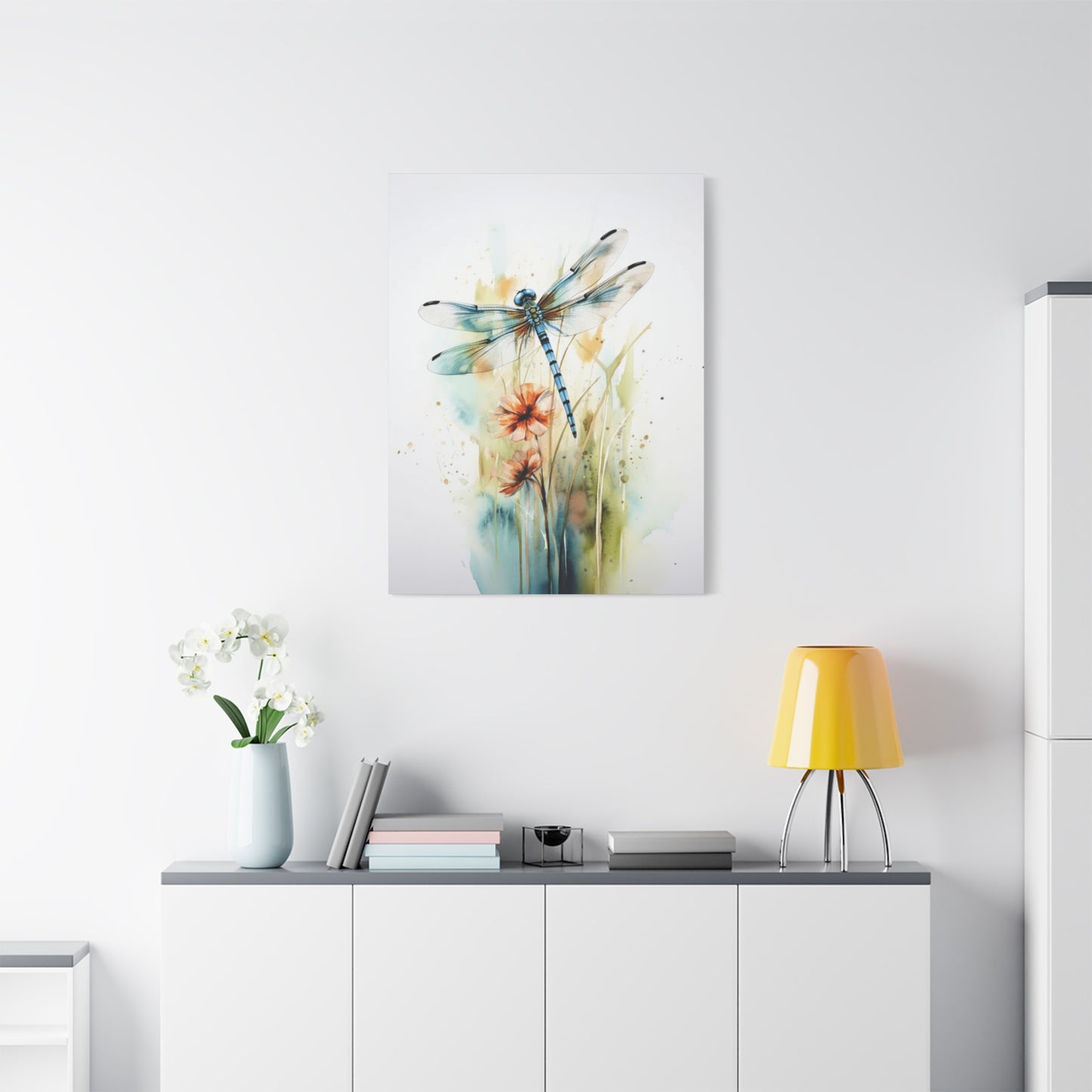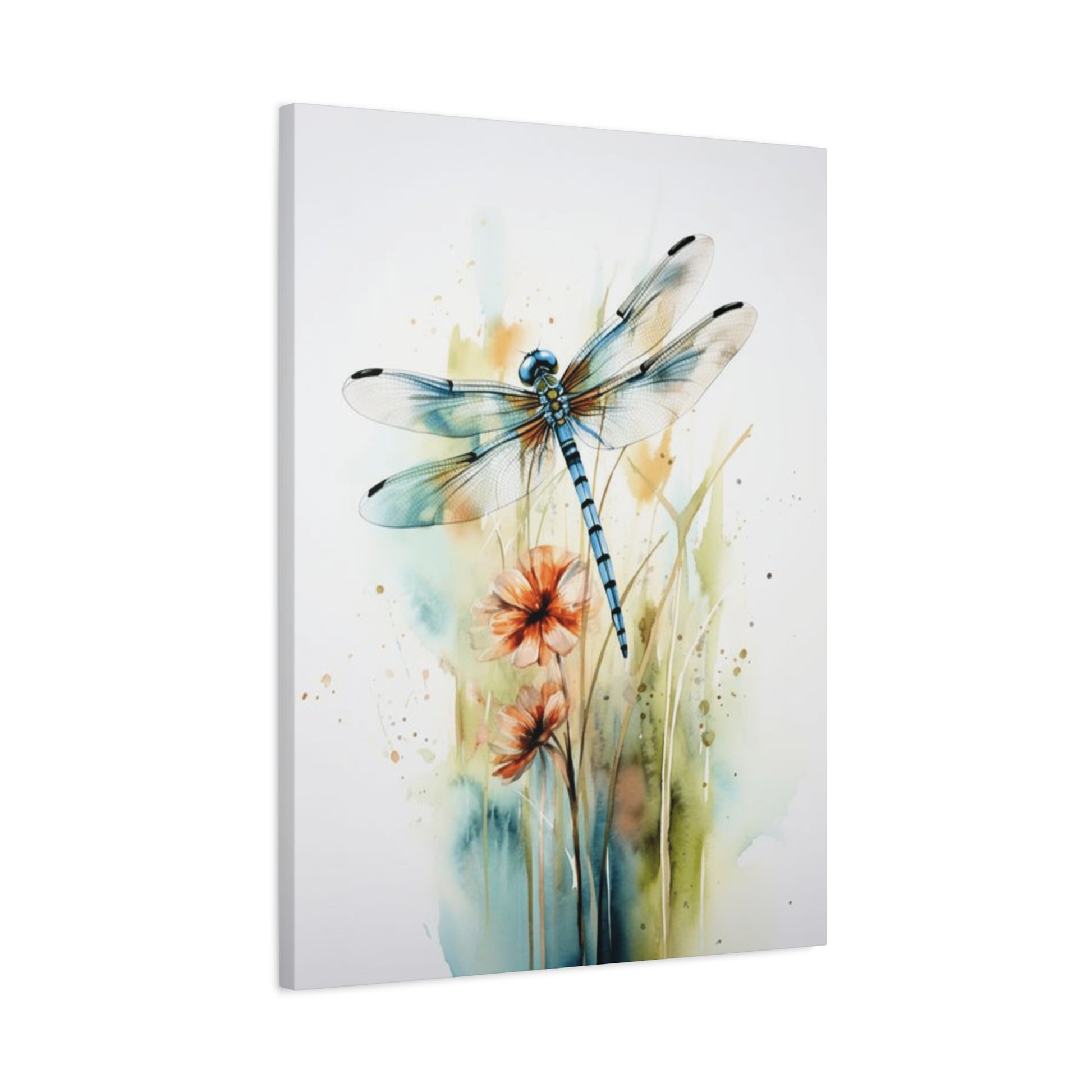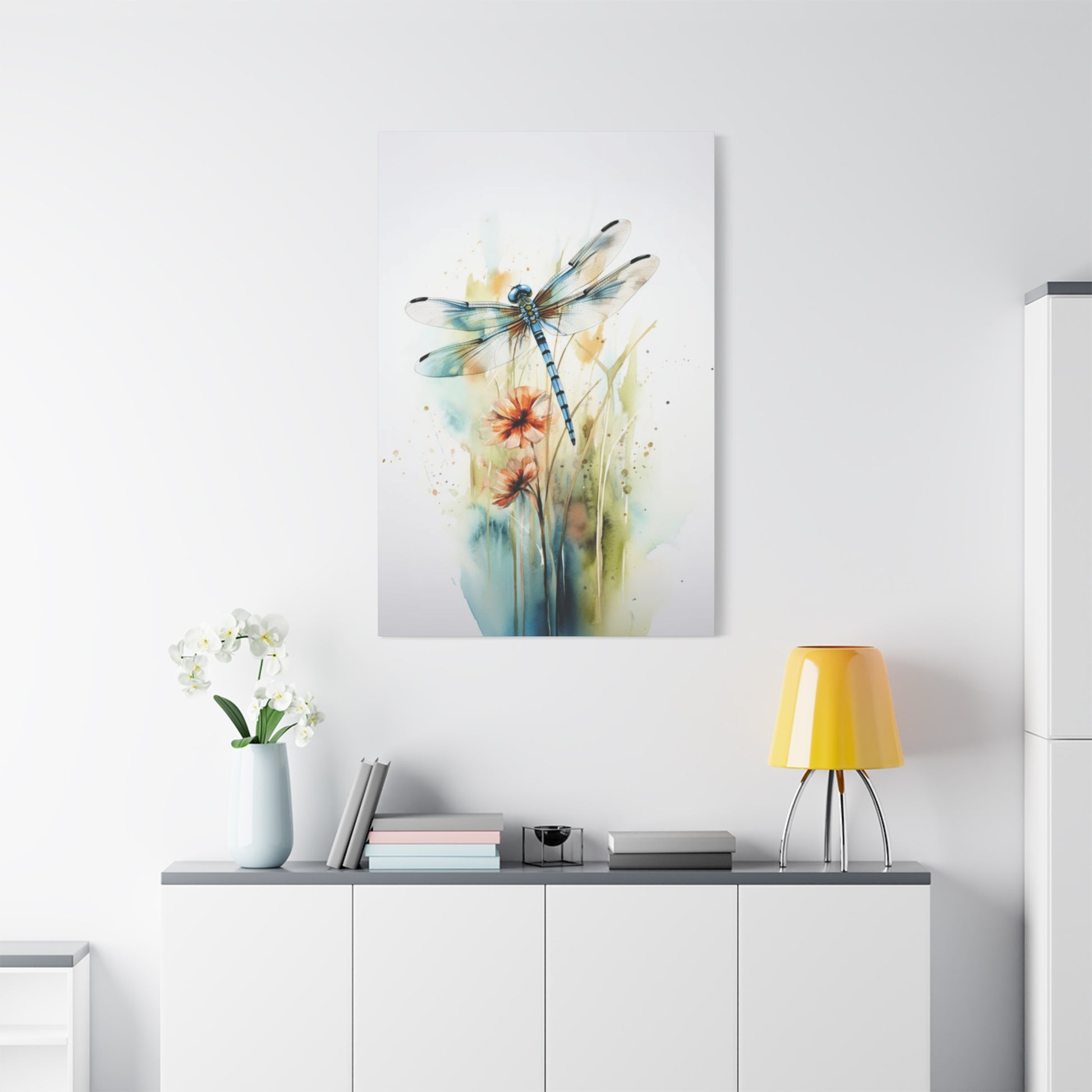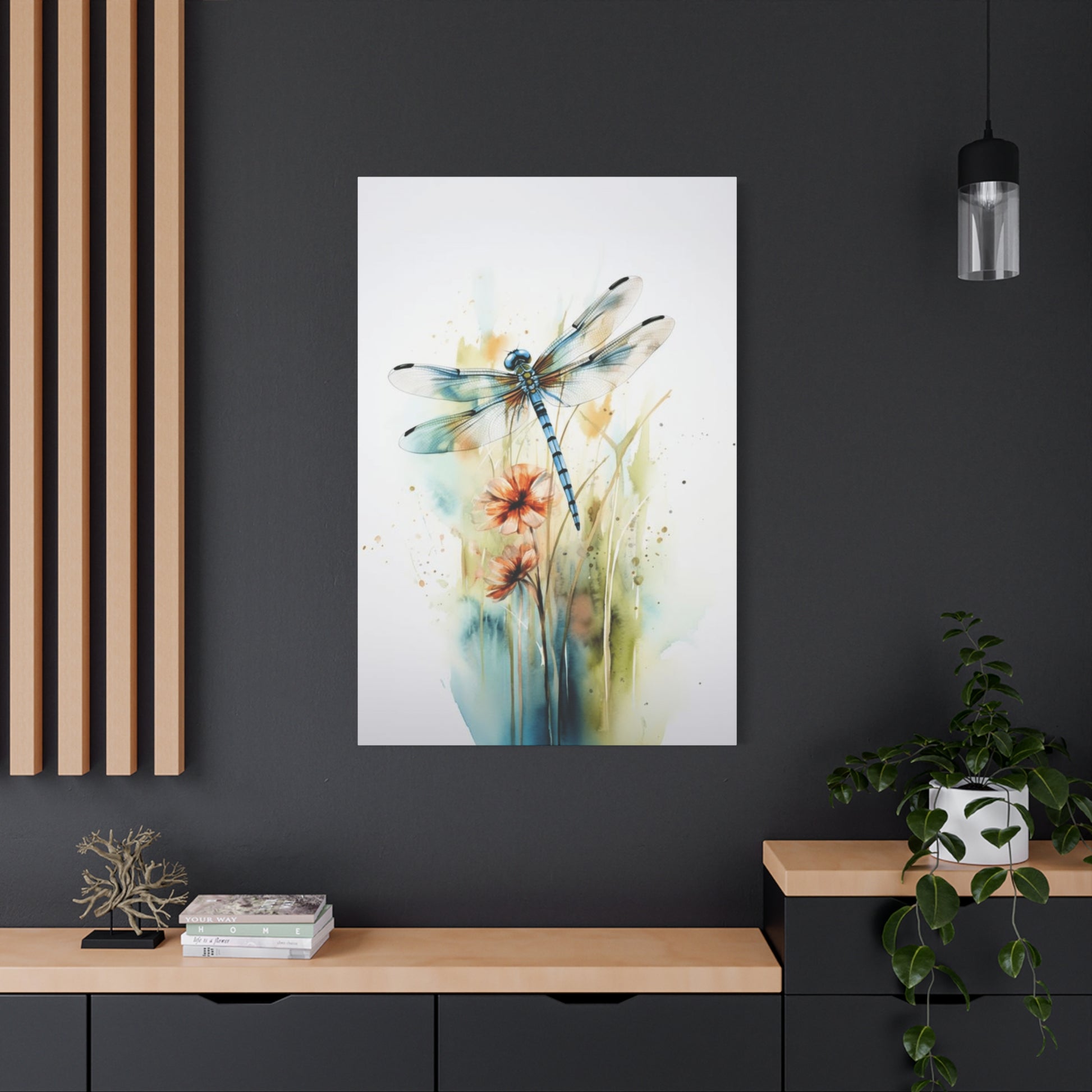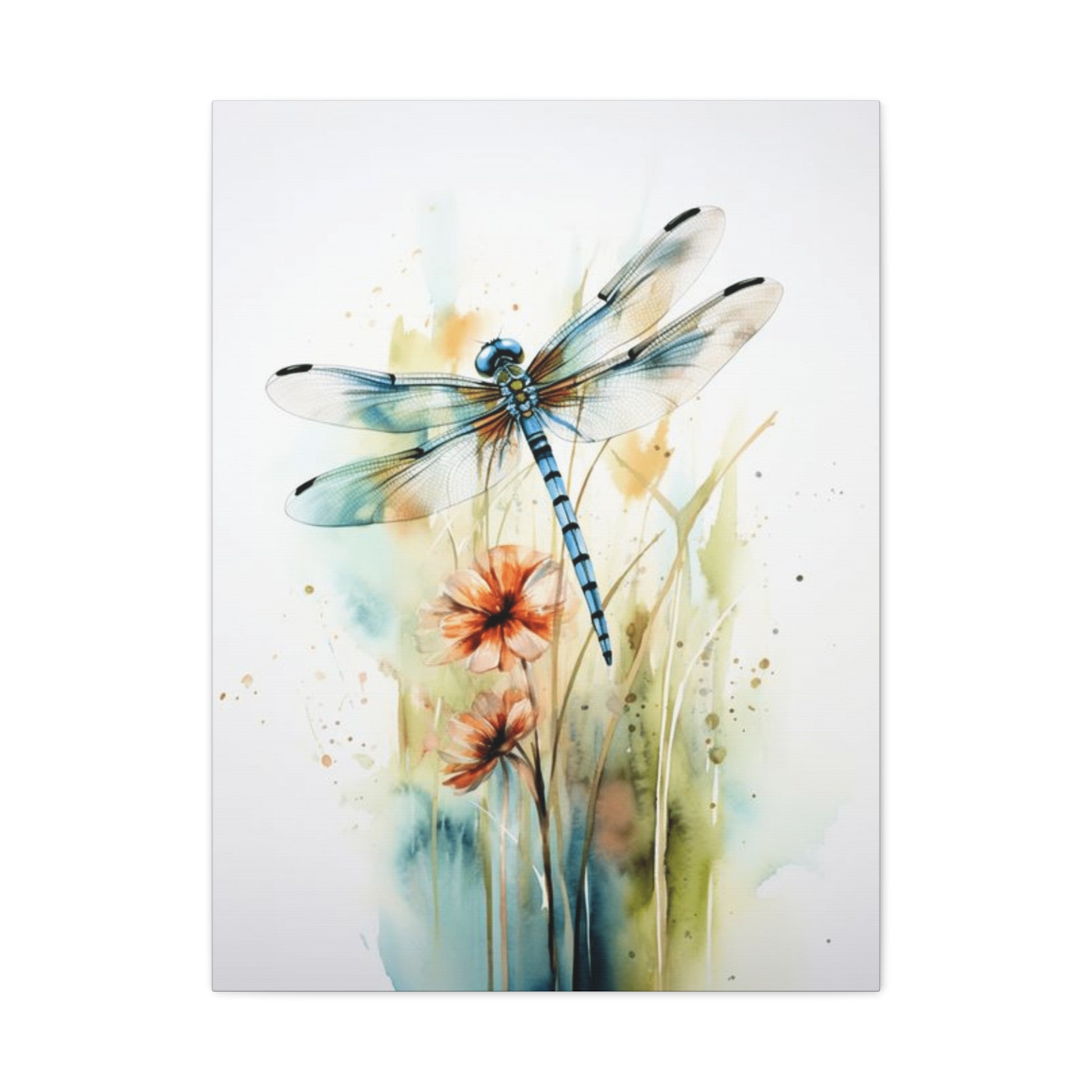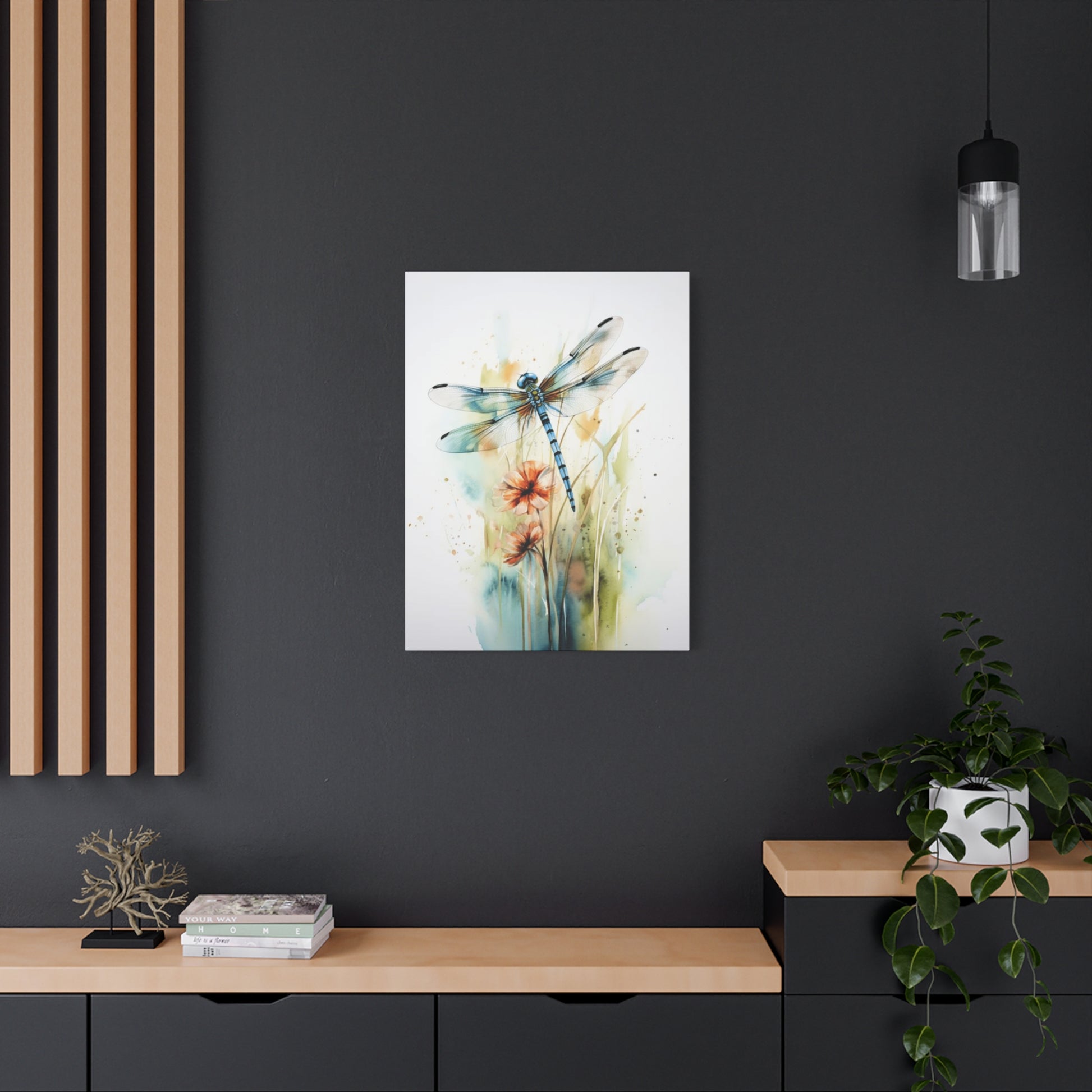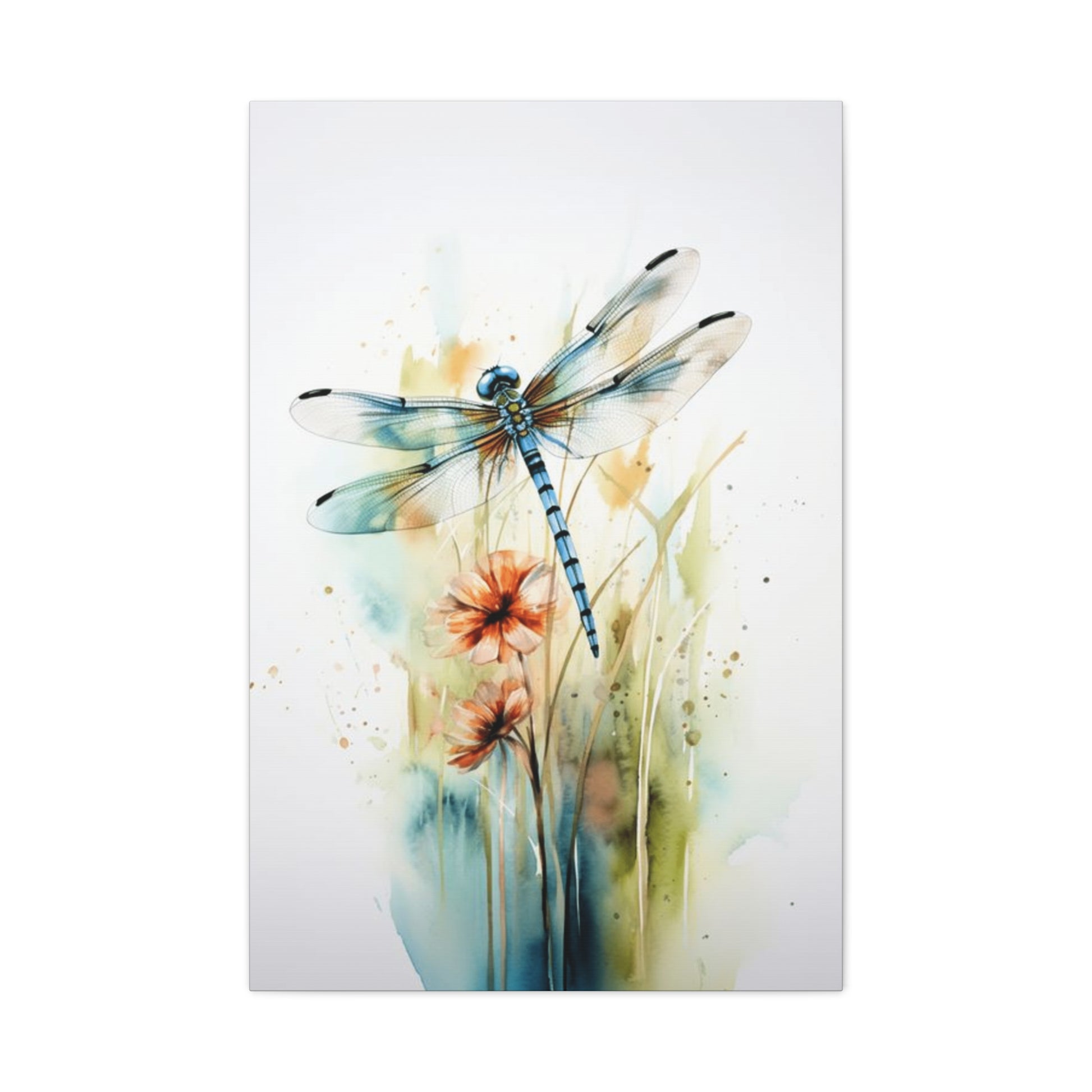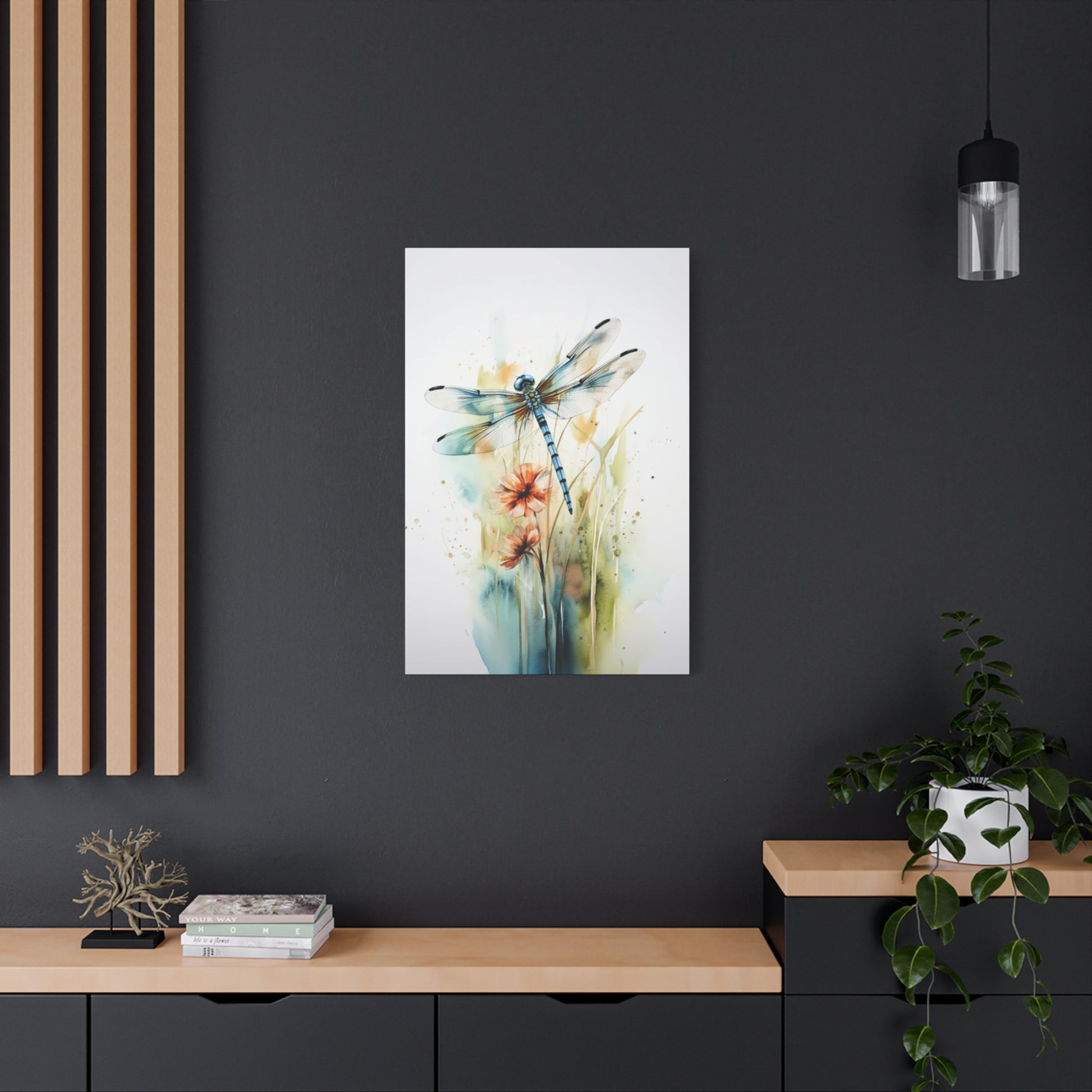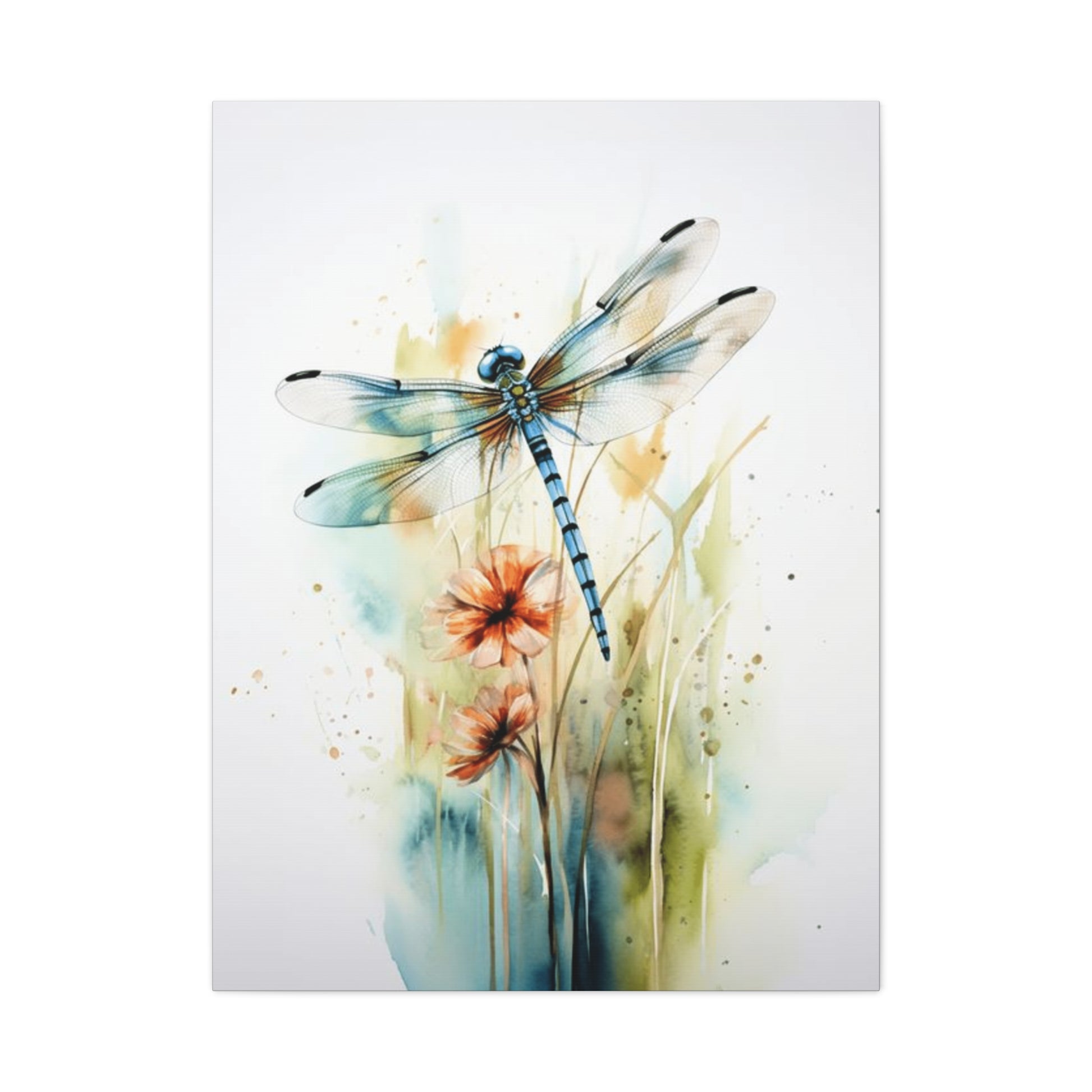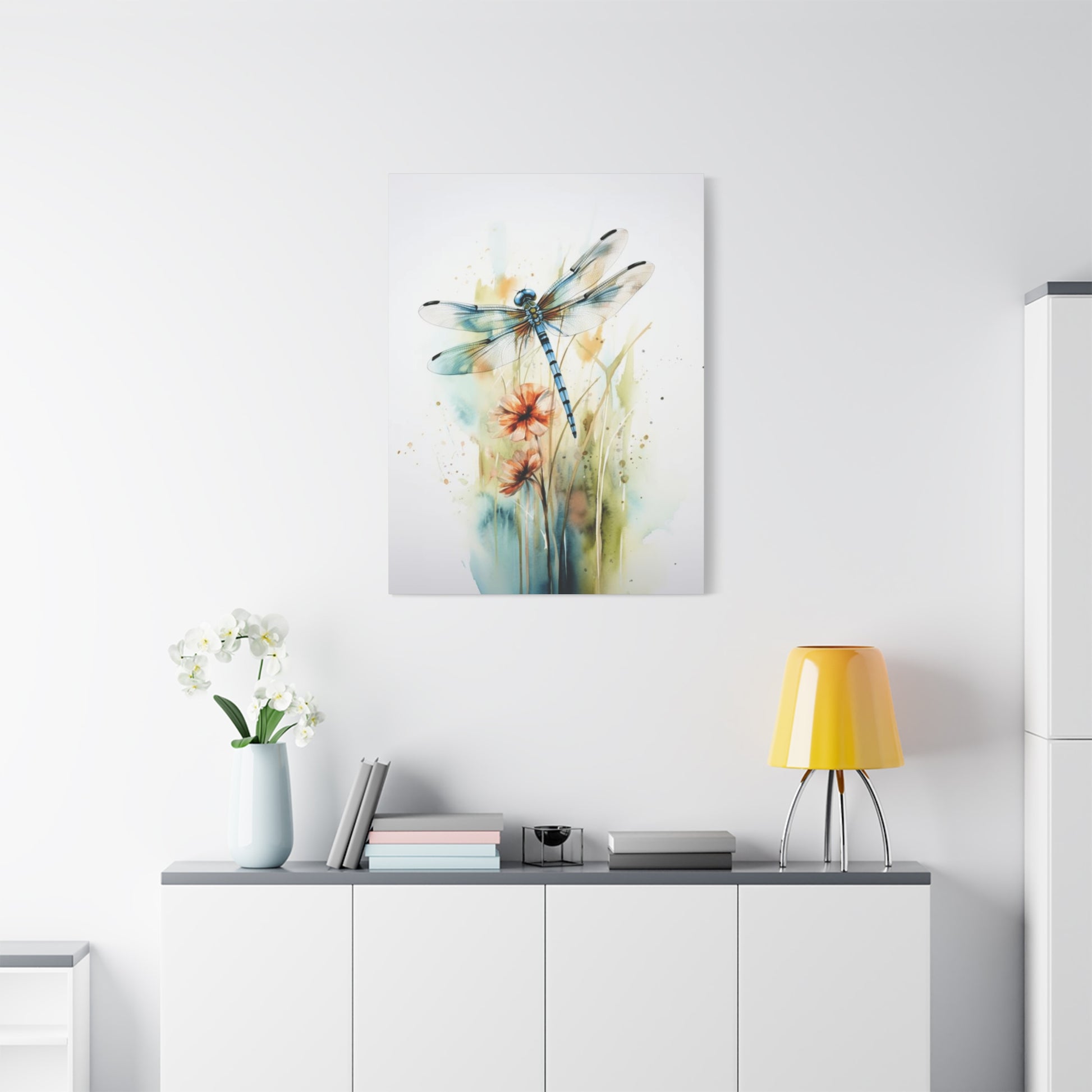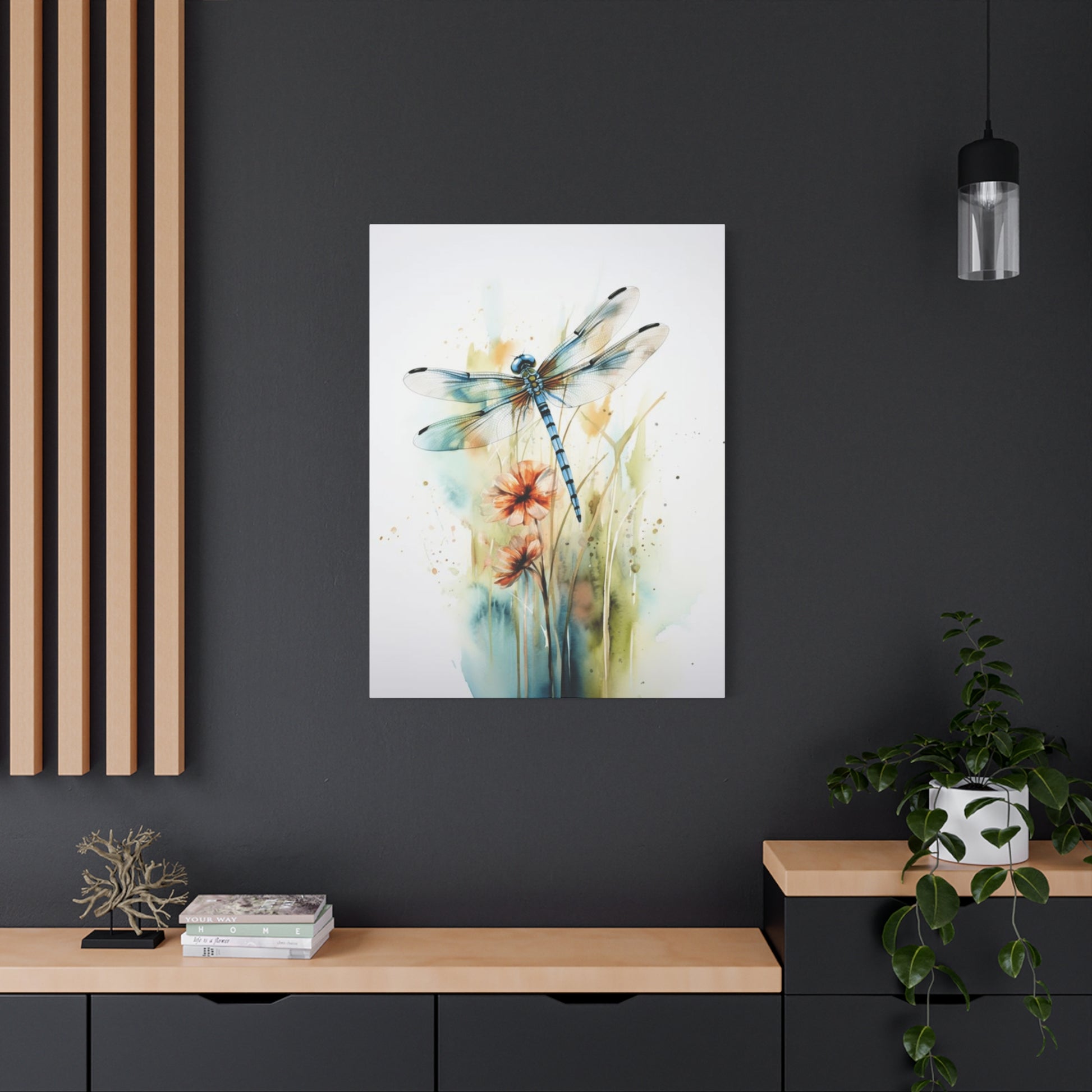Dragon Fly Wall Art & Canvas Prints
Dragon Fly Wall Art & Canvas Prints
Couldn't load pickup availability
Creative Ways to Showcase Dragon Fly Wall Art in Your Living Spaces for a Natural and Serene Home Atmosphere
Dragonflies have captivated human imagination for centuries with their iridescent wings, graceful flight patterns, and symbolic significance across various cultures worldwide. These remarkable insects represent transformation, adaptability, and the beauty of nature's intricate designs. When translated into decorative pieces for interior spaces, dragon fly wall art brings an enchanting element that combines natural elegance with artistic expression, creating focal points that resonate with viewers on multiple levels.
The incorporation of dragonfly-themed decorative elements into residential and commercial environments has gained tremendous popularity among homeowners, interior designers, and art enthusiasts who seek to establish connections with the natural world while maintaining sophisticated aesthetic standards. These artistic representations range from realistic depictions capturing every anatomical detail to abstract interpretations that emphasize movement, color, and symbolic meaning. Whether crafted from metal, canvas, wood, reclaimed materials, or mixed media combinations, each piece tells a unique story and contributes to the overall ambiance of the space it inhabits.
Understanding the various styles, materials, placement strategies, and cultural contexts surrounding dragonfly imagery enables individuals to make informed decisions when selecting pieces that align with their personal preferences, existing decor schemes, and spatial requirements. This comprehensive exploration delves into the multifaceted world of dragonfly-inspired decorative elements, examining everything from their symbolic meanings and artistic styles to practical considerations regarding installation, preservation, and harmonious integration within diverse interior design frameworks.
The Symbolic Significance and Cultural Meanings Behind Dragonfly Imagery Throughout Different Civilizations
Dragonflies hold profound symbolic significance across numerous cultures, spiritual traditions, and mythological systems throughout human history. In Japanese culture, these creatures symbolize strength, courage, and happiness, often appearing in traditional artwork, textiles, and ceremonial objects. The Japanese word for dragonfly, "tombo," carries associations with victory and success, making these insects particularly favored among samurai warriors who viewed them as emblems of power and fearlessness in battle.
Native American tribes across North America attribute various meanings to dragonflies, including swiftness, illusion, and transformation. Many indigenous peoples consider these insects as messengers between the physical and spiritual realms, capable of carrying prayers and wishes to the ancestors and spiritual guides. The Navajo people traditionally associate dragonflies with pure water and regard them as symbols of renewal and positive change, while other tribes view them as protectors and symbols of good fortune.
In European folklore and symbolism, dragonflies represent change, transformation, and adaptability, reflecting their remarkable metamorphosis from aquatic nymphs to airborne adults. This transformative journey resonates with individuals experiencing personal growth, life transitions, or spiritual awakening. The creature's ability to navigate between water and air elements symbolizes emotional depth combined with mental clarity, making dragonfly imagery particularly meaningful for those seeking balance between different aspects of their lives.
Celtic traditions associate dragonflies with fairies and the mystical realm, believing these insects serve as companions to supernatural beings and guardians of sacred places. The iridescent quality of dragonfly wings, which shift colors depending on viewing angles and light conditions, reinforced beliefs in their magical nature and connection to otherworldly dimensions. This mystical association continues to influence contemporary interpretations of dragonfly symbolism, particularly within New Age and spiritual communities.
Eastern philosophies, particularly within Chinese and Vietnamese cultures, regard dragonflies as symbols of prosperity, harmony, and good luck. In Feng Shui practices, dragonfly imagery is believed to attract positive energy, promote balance, and enhance the flow of chi throughout living spaces. The insect's association with water elements connects it to emotional intelligence, intuition, and the subconscious mind, making dragonfly decorations popular choices for meditation rooms, healing spaces, and areas dedicated to personal reflection.
Contemporary spiritual interpretations often emphasize the dragonfly's connection to living in the moment, embracing change with grace, and seeing through illusions to perceive deeper truths. The insect's 360-degree vision and ability to move in any direction symbolize perspective, flexibility, and the capacity to view situations from multiple angles. These modern symbolic associations make dragon fly wall art particularly appealing to individuals interested in mindfulness, personal development, and conscious living practices.
Exploring Various Artistic Styles and Design Approaches for Dragonfly-Themed Decorative Pieces
The artistic representation of dragonflies encompasses an impressive spectrum of styles, each offering distinct visual impacts and emotional resonances. Realistic depictions meticulously capture the anatomical details of these insects, including the delicate vein patterns in their wings, the segmented structure of their elongated bodies, and the multifaceted compound eyes that characterize their appearance. Artists creating realistic pieces often reference scientific illustrations and nature photography, striving for accuracy that allows viewers to appreciate the biological complexity and natural beauty of these creatures.
Impressionistic interpretations take a softer approach, emphasizing light, color, and movement over precise details. These pieces often feature blurred edges, visible brushstrokes, and atmospheric effects that evoke the ephemeral quality of dragonflies in flight. The impressionistic style particularly suits dragonfly subjects, as their rapid wingbeats and hovering behaviors create natural opportunities for artists to explore motion and transience through their chosen mediums.
Abstract representations distill dragonfly forms to their essential elements, using geometric shapes, bold colors, and simplified silhouettes to convey the essence rather than the literal appearance of these insects. Abstract dragon fly wall art often plays with symmetry, repeating patterns, and color relationships, creating compositions that function as much through design principles as through recognizable subject matter. These pieces appeal to viewers seeking contemporary aesthetics and decorative elements that complement modern interior design schemes.
Minimalist approaches strip away all but the most fundamental components, presenting dragonfly forms through clean lines, negative space, and restrained color palettes. The minimalist philosophy of "less is more" allows these pieces to make powerful statements through simplicity, often using single continuous lines to suggest the entire insect or reducing the form to its most iconic features. These understated representations work particularly well in environments emphasizing tranquility, order, and uncluttered visual landscapes.
Mixed media creations combine multiple materials and techniques within single pieces, producing rich textural contrasts and visual interest through layering and dimensional effects. Artists might incorporate metal components for the body, glass or resin for the wings, fabric elements for background interest, and painted details to enhance specific features. This approach allows for remarkable creative freedom and results in unique pieces that engage viewers through tactile as well as visual qualities.
Three-dimensional sculptural pieces extend beyond traditional flat surfaces, creating dramatic shadows and changing appearances based on viewing angles and lighting conditions. Metal sculptures might feature wings that appear to flutter in breezes, while wooden carvings showcase the grain patterns and natural variations of their base materials. These dimensional works transform walls into dynamic displays that interact with their environments in ways that two-dimensional representations cannot achieve.
Material Selections and Their Impact on Aesthetic Qualities and Longevity of Dragonfly Decorations
The choice of materials significantly influences both the visual characteristics and durability of dragonfly-themed decorative pieces. Metal constructions, particularly those crafted from copper, bronze, wrought iron, or stainless steel, offer exceptional longevity and distinctive aesthetic qualities. Copper pieces develop beautiful patinas over time, shifting from warm orange tones to rich green-blue hues that add character and depth. These natural aging processes create unique appearances for each piece, ensuring that no two examples remain identical even when produced from the same design.
Wrought iron provides strength and allows for intricate scrollwork and delicate details despite the material's substantial nature. Blacksmiths and metalworkers can forge iron into surprisingly delicate wing structures that belie the material's density, creating compelling contrasts between apparent fragility and actual durability. Powder coating or specialized painting techniques protect iron from rust while allowing for vibrant color applications that enhance the decorative appeal.
Canvas-based pieces utilize fabric stretched over wooden frames as supports for painted, printed, or mixed media compositions. High-quality canvas accepts various paint types, including acrylics, oils, and specialized inks, providing artists with versatile platforms for their creative visions. Gallery-wrapped canvases, where the image extends around the edges, create finished appearances without requiring additional framing, offering contemporary presentations that work well in modern interiors.
Wooden constructions bring organic warmth and natural textures to dragonfly representations. Carved pieces showcase the beauty of wood grain patterns, while assembled designs might combine different wood species to create color contrasts and visual interest. Reclaimed wood adds rustic character and environmental consciousness to pieces, appealing to individuals who value sustainability and authenticity in their decorative choices. Various finishing techniques, including staining, painting, burning, and natural oil treatments, allow for diverse aesthetic outcomes from similar base materials.
Glass and resin materials enable artists to capture the translucent, iridescent qualities of actual dragonfly wings with remarkable fidelity. Stained glass techniques produce luminous effects when light passes through colored panels, while fused glass creates smooth, contemporary surfaces with embedded colors and textures. Resin casting allows for three-dimensional encapsulation of materials, creating depth and preserving delicate elements within clear or tinted mediums that protect while displaying.
Ceramic and porcelain pieces offer smooth, refined surfaces ideal for detailed painting and glazing. These materials accept vibrant colors that remain stable over time, and firing processes create permanent bonds between pigments and substrates. Handcrafted ceramic dragonflies often feature unique glazing effects, including crackling, metallic sheens, and color variations that emerge unpredictably during kiln firing, ensuring each piece possesses distinctive character.
Determining Ideal Placement Locations Within Various Rooms to Maximize Visual Impact and Harmony
Strategic placement of dragon fly wall art significantly affects both the visual impact of individual pieces and their contribution to overall room aesthetics. In living rooms, positioning dragonfly decorations above seating arrangements creates natural focal points that draw the eye and anchor furniture groupings. The height and scale of pieces should correspond with the proportions of surrounding furniture, maintaining visual balance while ensuring comfortable viewing angles for seated occupants.
Entryways and foyer spaces benefit from welcoming dragonfly imagery that sets positive tones for entire homes. These transitional areas often feature limited wall space, making carefully selected pieces particularly impactful. A striking dragonfly sculpture or artistic rendering immediately communicates the homeowner's appreciation for nature and artistic expression, creating memorable first impressions for visitors while reinforcing personal aesthetic preferences each time residents return home.
Bedroom environments can incorporate dragonfly themes to promote tranquility, transformation, and personal reflection. Positioning pieces opposite beds allows for contemplation upon waking and before sleeping, integrating symbolic meanings into daily rhythms. The calming associations of dragonflies make them particularly appropriate for rest spaces, where their presence supports relaxation and peaceful atmospheres conducive to rejuvenation.
Bathroom settings, particularly those designed as spa-like retreats, harmonize beautifully with dragonfly imagery due to the insect's natural association with water. Moisture-resistant materials such as metal, sealed wood, or specially treated canvases prevent damage in humid environments while maintaining decorative appeal. The placement of dragonfly pieces near bathtubs or vanity areas enhances the connection between bathing rituals and natural water environments where these creatures naturally dwell.
Kitchen and dining spaces can incorporate dragonfly elements to introduce natural beauty into areas often dominated by functional considerations. Open wall spaces between cabinets, areas above doorways, or sections of feature walls provide opportunities for artistic expressions that soften the utilitarian aspects of these rooms. The presence of nature-inspired artwork in eating areas subtly encourages mindful consumption and appreciation for natural cycles and seasonal changes.
Home offices and creative workspaces benefit from dragonfly symbolism related to perspective, vision, and adaptability. Positioning these pieces within sight lines from desks or work areas provides visual breaks during concentrated efforts while reinforcing symbolic meanings associated with clear thinking and flexible problem-solving. The inspirational qualities of dragonfly imagery support creative processes and encourage viewing challenges from multiple angles.
Outdoor living areas, including covered patios, screened porches, and garden structures, offer ideal settings for dragonfly decorations that bridge interior and exterior environments. Weather-resistant materials extend the indoor aesthetic into outdoor spaces, creating cohesive design flows between different areas of properties. The presence of artistic dragonfly representations in gardens where actual specimens might appear adds layers of meaning and creates dialogues between art and nature.
Color Palette Considerations and Their Psychological Effects on Viewers and Room Atmospheres
Color selection in dragon fly wall art profoundly influences emotional responses and spatial perceptions within rooms. Vibrant jewel tones, including sapphire blues, emerald greens, ruby reds, and amethyst purples, mirror the iridescent qualities of actual dragonfly wings while creating energizing, luxurious atmospheres. These saturated hues command attention and work particularly well as statement pieces in rooms with neutral backgrounds, where they provide dramatic color accents without overwhelming spaces.
Metallic finishes, such as gold, silver, copper, and bronze, add sophistication and reflect light in ways that animate pieces throughout the day as natural illumination shifts. The reflective qualities of metallic surfaces create subtle movements and changing appearances that prevent decorations from becoming static or visually stagnant. These finishes complement both traditional and contemporary design schemes, offering versatility across diverse interior styles.
Earth tones, including various browns, tans, rusts, and olive greens, ground dragonfly representations in natural color palettes that promote calm, stability, and connection to the outdoors. These subdued hues integrate seamlessly with organic materials like wood, stone, and natural fibers, creating cohesive environments that emphasize sustainability and harmony with nature. Earth-toned pieces suit rooms designed for relaxation, meditation, or refuge from urban environments.
Cool color schemes featuring blues, greens, and purples create serene, contemplative atmospheres that reduce visual temperature and promote relaxation. These colors psychologically recede, making rooms feel more spacious while encouraging inward focus and calm mental states. Cool-toned dragonfly artwork particularly suits bedrooms, bathrooms, and personal retreat spaces where tranquility takes priority over stimulation.
Warm palettes incorporating reds, oranges, and yellows generate energy, enthusiasm, and social engagement within spaces. These advancing colors create intimate feelings in large rooms while adding vitality to areas where activity and interaction occur. Warm-toned dragonfly pieces work well in gathering spaces, dining rooms, and areas where homeowners wish to encourage lively conversation and communal experiences.
Monochromatic approaches using various shades and tints of single colors create sophisticated, unified appearances that emphasize form and composition over chromatic contrast. Black and white dragonfly representations offer timeless elegance and versatility, adapting to numerous color schemes without clashing. These neutral pieces provide decorative interest without introducing additional colors into carefully curated palettes.
Iridescent and color-shifting finishes replicate the optical properties of actual dragonfly wings, creating dynamic visual experiences that change based on viewing angles and lighting conditions. These special effect finishes add magical qualities to pieces, rewarding repeated viewing with new discoveries and maintaining long-term interest through their changeable nature. The interactive quality of iridescent pieces particularly appeals to individuals who appreciate subtle complexity and layered meanings.
Size Considerations and Proportional Relationships Between Artwork and Surrounding Architectural Features
Proper sizing of dragon fly wall art ensures pieces achieve appropriate visual weight within their intended spaces without overwhelming or disappearing among surrounding elements. Large-scale pieces measuring several feet across make bold statements suitable for expansive walls in open-concept living areas, high-ceilinged spaces, or commercial environments. These substantial works anchor rooms visually and can stand alone as singular focal points without requiring accompanying pieces.
Medium-sized artworks, typically ranging from eighteen inches to three feet in any dimension, offer versatility for most residential spaces. These proportions work well above furniture pieces, within gallery wall arrangements, or as components of larger decorative schemes. Medium pieces provide sufficient presence to capture attention while remaining approachable and not dominating surrounding elements.
Small dragonfly representations measuring under eighteen inches serve well as accent pieces, components of collections, or decorative elements in compact spaces like powder rooms, hallways, or nooks. Multiple small pieces can be arranged in clusters or patterns to create visual interest equivalent to single larger works while offering compositional flexibility and opportunities for creative arrangements.
The relationship between artwork dimensions and furniture below significantly affects visual harmony. A general guideline suggests that pieces hung above sofas, beds, or consoles should span approximately two-thirds to three-quarters the width of the furniture beneath, creating balanced proportions that neither float disconnectedly nor overwhelm the supporting elements. This proportional relationship establishes visual anchoring that integrates artwork with furniture groupings.
Ceiling height influences appropriate artwork sizes, with higher ceilings accommodating proportionally larger pieces. Standard eight-foot ceilings typically suit smaller to medium artworks, while nine-foot or higher ceilings can handle progressively larger pieces without the space feeling cluttered. Vertical arrangements and tall, narrow formats help draw the eye upward in rooms with generous ceiling heights, emphasizing architectural verticality.
Gallery wall arrangements combining multiple dragonfly pieces of varying sizes create dynamic compositions that fill substantial wall areas while maintaining visual interest through variety. Successful gallery walls balance different sizes, orientations, and frame styles while maintaining cohesive themes through subject matter, color palettes, or artistic styles. Planning these arrangements on floors before installation ensures satisfactory compositions and prevents multiple nail holes from abandoned attempts.
Negative space surrounding artwork significantly impacts its perceived size and importance. Generous empty space around pieces allows them to breathe visually, emphasizing their significance and preventing cluttered appearances. Conversely, positioning works among other decorative elements or within busier environments diminishes their apparent size and can cause them to recede into backgrounds rather than commanding attention.
Complementary Decor Elements That Enhance Dragonfly Themes Throughout Interior Spaces
Creating cohesive interior environments around dragonfly themes involves thoughtfully selecting complementary decorative elements that reinforce natural motifs without redundancy or overwhelming spaces. Botanical elements, including potted plants, dried flower arrangements, and nature photography, establish organic contexts that make dragonfly imagery feel natural and integrated rather than arbitrary. Indoor plants with long, slender leaves echo the linear forms of dragonfly bodies, while flowering varieties add color harmonies that can complement or contrast with artwork palettes.
Water features, such as tabletop fountains, aquariums, or decorative bowls, connect to the aquatic origins and habitats of dragonflies, creating thematic consistency while introducing soothing sounds and reflective surfaces that enhance ambiance. The movement of water adds dynamic elements to static artwork, creating multi-sensory experiences that engage visitors more fully than visual components alone.
Textile selections offer opportunities to echo dragonfly themes through patterns, colors, and textures. Throw pillows featuring dragonfly motifs complement wall decorations without duplicating them exactly, while curtains or area rugs in coordinating colors unify spaces. Natural fiber textiles like linen, cotton, and silk align with organic themes and provide textural contrasts to smooth painted surfaces or metallic finishes.
Lighting choices significantly affect how dragonfly artwork appears and can themselves become thematic elements. Fixtures with organic forms, nature-inspired designs, or even subtle dragonfly motifs reinforce themes while providing necessary illumination. Adjustable spotlights or picture lights highlight specific pieces, enhancing their visibility and importance while creating dramatic shadows that add depth to three-dimensional works.
Furniture selections in natural materials like wood, rattan, or bamboo support organic themes and create harmonious backgrounds for nature-inspired artwork. Pieces with curved lines and flowing forms echo the graceful movements of dragonflies, while those with linear elements complement the insects' elongated body structures. Material choices affect whether environments feel rustic, contemporary, or somewhere between these poles.
Mirrors strategically placed opposite or adjacent to dragonfly artwork multiply visual impact by creating reflections that expand apparent spaces while duplicating decorative elements. This technique works particularly well with three-dimensional metal sculptures, which produce intriguing reflected images that add complexity to simple arrangements. Mirrors also increase natural light distribution, enhancing visibility of artwork throughout changing daylight conditions.
Color coordinated accessories, including vases, decorative objects, books, and small sculptures, create visual connections between dragonfly artwork and surrounding elements. Selecting items that echo one or two prominent colors from artwork establishes cohesion without requiring exact matches, which can appear forced or overly coordinated. The repetition of key colors throughout spaces creates rhythms that guide eyes around rooms and establish unified aesthetics.
Frame Selection and Presentation Methods That Enhance Rather Than Distract From Dragonfly Imagery
The frames or presentation methods chosen for dragon fly wall art significantly impact overall visual impressions and should receive careful consideration during selection processes. Traditional wooden frames offer warmth and versatility, with profiles ranging from simple, narrow moldings to elaborate, ornate borders. Wood tones can either match or contrast with artwork, depending on desired effects, and various finishes from natural grain to painted surfaces provide extensive customization options.
Metal frames, constructed from aluminum, steel, or brass, deliver contemporary sophistication and clean lines that complement modern interiors. Thin metal profiles create minimal visual interruption between artwork and surroundings, allowing pieces to float against walls with subtle definition. Metallic finishes can coordinate with metallic elements within artwork itself, creating unified presentations that appear intentionally designed as complete units.
Floating frames create gaps between artwork and frame faces, producing shadow effects that add dimension and visual interest. This presentation style works particularly well with canvas pieces and creates contemporary appearances that suit minimalist or modern design schemes. The visible depth draws attention to the artwork's physical presence as an object rather than simply an image on walls.
Gallery wrapping, where canvas extends around frame edges without visible borders, offers frameless presentations that emphasize artwork itself without decorative interruption. This contemporary approach works well with pieces whose compositions extend naturally to edges and suits environments where clean, uncluttered aesthetics take priority. Gallery-wrapped pieces can hang directly on walls or be mounted on shallow profile frames invisible from front views.
Shadow box presentations, featuring deep frames that create substantial space between artwork and glass or open fronts, accommodate three-dimensional elements and create dramatic depth. These presentation methods suit mixed media pieces, assemblages, or preserved specimens, protecting delicate components while allowing full visibility. The depth of shadow boxes adds sculptural qualities to wall hangings and creates interesting play with light and shadow.
Matting serves both protective and aesthetic functions, creating breathing room between artwork and frames while drawing focus inward toward images. Mat colors should complement rather than compete with artwork, with neutral tones providing safe, versatile choices. Multiple mats in coordinating colors add sophistication and can incorporate colors from artwork to create cohesive presentations.
Frameless mounting options, including standoffs, clips, or direct adhesion, deliver ultra-contemporary appearances that emphasize artwork while minimizing visible support structures. These methods suit modern, industrial, or minimalist interiors where traditional framing might feel incongruous. The apparent floating of artwork against walls creates striking visual effects, though these mounting methods require careful installation to ensure security.
Creating Harmonious Arrangements When Displaying Multiple Dragonfly Pieces Together
Displaying multiple dragonfly-themed pieces creates opportunities for visual storytelling and thematic depth but requires thoughtful composition to avoid cluttered or chaotic appearances. Gallery wall arrangements allow for creative combinations of different sizes, orientations, and frame styles while maintaining cohesion through shared subject matter. Successful gallery walls often begin with a largest piece that anchors the composition, with smaller works arranged around this focal point in balanced configurations.
Symmetrical arrangements provide formal, orderly appearances suitable for traditional interiors and spaces where classical proportions predominate. Matching pairs of dragonfly pieces flanking central elements like doorways, windows, or furniture create mirror images that emphasize balance and intentional design. This approach works particularly well in formal living rooms, dining rooms, or master bedrooms where elegance takes priority over casual comfort.
Asymmetrical compositions offer dynamic, contemporary alternatives to symmetrical arrangements, creating visual interest through varied placement while maintaining overall balance through careful attention to visual weight. Larger, darker, or more visually complex pieces carry greater weight and should be balanced by appropriate distributions of smaller or simpler works. This approach suits modern, eclectic, or bohemian interiors where unexpected juxtapositions and creative freedom characterize design philosophies.
Linear arrangements placing multiple pieces in horizontal or vertical rows create clean, organized presentations suitable for hallways, staircases, or narrow wall spaces. Consistent spacing between pieces establishes rhythm and order, while variations in size or orientation within linear arrangements prevent monotony. Horizontal lines emphasize width and create calming effects, while vertical arrangements draw eyes upward and emphasize height.
Clustered groupings position pieces close together, sometimes with overlapping frames, creating intimate, collected appearances that suggest personal significance and curated selections over time. This approach works well for smaller pieces and creates visual density that commands attention despite individual works' modest sizes. Clusters can be contained within imaginary geometric shapes for organizational structure or allowed to grow organically in looser configurations.
Stair step arrangements align pieces along diagonal lines, creating dynamic compositions that guide eyes across walls while suggesting movement and progression. This technique particularly suits staircases, where artwork can follow ascending or descending pathways, but also works on open walls where diagonal orientations add energy and directionality to otherwise static spaces.
Themed groupings organize multiple dragonfly pieces by specific criteria such as color, size, style, or medium, creating mini-collections within larger displays. This curatorial approach adds intellectual interest to arrangements and invites viewers to identify organizing principles while appreciating individual pieces. Themed groupings work particularly well for serious collectors or individuals with extensive dragonfly artwork collections who wish to display pieces systematically.
Illumination Strategies That Showcase Dragonfly Artwork While Creating Desired Atmospheric Effects
Proper lighting transforms dragon fly wall art from static decorations into dynamic focal points that contribute significantly to room atmospheres. Natural daylight provides ideal illumination for viewing true colors and subtle details, though its changing qualities throughout days and seasons create variable viewing experiences. Positioning artwork on walls that receive indirect natural light prevents sun damage while ensuring adequate visibility, and the shifting qualities of daylight animate pieces in ways artificial lighting cannot replicate.
Picture lights mounted directly above or below frames cast concentrated illumination on specific pieces, highlighting them as important elements deserving focused attention. These dedicated fixtures ensure consistent visibility regardless of ambient lighting conditions and add subtle sophistication through their presence. Adjustable picture lights allow for customization of beam angles and intensities, accommodating different artwork sizes and desired levels of prominence.
Track lighting systems provide flexibility for illuminating multiple pieces or adjusting focus as artwork changes or arrangements evolve. Individual fixtures can be aimed precisely at specific works, creating customized lighting schemes that adapt to specific needs. Track systems work particularly well in rooms with multiple dragonfly pieces or in spaces where artwork changes frequently, as repositioning fixtures requires no rewiring or structural modifications.
Recessed ceiling fixtures, particularly adjustable types, offer unobtrusive lighting solutions that illuminate artwork without visible fixtures competing for attention. These integrated lighting elements suit contemporary interiors prioritizing clean lines and minimal visual clutter. The downward angles of recessed lights create dramatic shadows on three-dimensional pieces while providing adequate general illumination for viewing details.
Accent lighting using small spotlights, uplights, or wall washers creates dramatic effects that transform artwork into nighttime focal points. These theatrical approaches suit entertaining spaces or rooms where evening use predominates. Dimmer switches allow for adjustment of intensity based on activities and desired moods, providing flexibility between dramatic highlighting and subtle background presence.
LED strip lighting mounted behind artwork or within shadow boxes creates haloing effects that separate pieces from walls while providing ambient illumination. This indirect lighting approach adds modern sophistication and works particularly well with translucent or glass-based dragonfly pieces where light transmission enhances visual effects. Color-changing LED strips offer creative possibilities for altering appearances based on occasions or preferences.
Ambient room lighting affects how dragonfly artwork appears within broader contexts. Layered lighting schemes combining general illumination, task lighting, and accent lighting provide flexibility and prevent flat, single-source lighting that diminishes depth perception. The interplay between different light sources creates complexity and interest while ensuring artwork remains visible and appreciated regardless of time or activity.
Seasonal Decorating Approaches That Incorporate Dragonfly Themes Throughout the Year
Dragonfly imagery adapts beautifully to seasonal decorating schemes, offering year-round versatility while allowing for thematic variations that keep interiors feeling fresh and responsive to changing seasons. Spring presentations emphasize renewal and emergence, incorporating pastel color palettes, fresh floral elements, and lightweight fabrics that echo the season's delicate energy. Positioning dragonfly artwork among cherry blossoms, tulips, or other spring flowers creates narrative connections to insects' appearances in nature following winter dormancy.
Summer arrangements celebrate vitality and abundance, featuring vibrant colors, lush greenery, and water elements that reflect the peak activity periods for actual dragonflies. Bold, saturated hues in complementary decorations match the energy of fully grown specimens darting over ponds and streams. Incorporating tropical plants, bright textiles, and outdoor-inspired accessories creates summery contexts that make dragonfly artwork feel particularly appropriate and alive.
Autumn presentations can embrace transitional themes as dragonflies prepare for seasonal changes, using warm color palettes featuring oranges, golds, and deep reds that coordinate with fall foliage. Surrounding dragonfly pieces with harvest elements like gourds, dried grasses, and autumn leaves creates rich, layered displays that celebrate natural cycles. The symbolic associations of dragonflies with change and transformation resonate particularly strongly during autumn, a season inherently focused on transition.
Winter arrangements might seem challenging for insect-themed artwork, but creative approaches maintain dragonfly presence while adapting to seasonal aesthetics. Incorporating pieces with cool color palettes featuring blues, silvers, and whites creates winter-appropriate contexts, while emphasizing the ethereal, fairy-like associations of dragonflies connects them to seasonal storytelling and magical themes. Surrounding artwork with evergreens, white flowers, and crystalline decorative elements creates cohesive winter presentations that honor both the season and the dragonfly theme.
Holiday decorating presents opportunities for subtle integration rather than overwhelming transformations. During winter holidays, metallic dragonfly pieces complement ornamental elements without requiring removal or covering. Spring holidays like Easter naturally accommodate dragonfly themes through shared associations with renewal and nature's awakening. The key to successful holiday integration involves allowing dragonfly artwork to remain visible and appreciated while adding seasonal elements that enhance rather than obscure permanent decorative choices.
Rotating complementary decorations around constant dragonfly artwork provides variety without requiring removal of beloved pieces or investment in entirely different themes for different seasons. Changing textile colors, swapping accent pillows, introducing seasonal flowers, or adjusting lighting can transform the feel of spaces while maintaining core decorative elements. This approach offers freshness and responsiveness to seasons while honoring investments in quality permanent pieces.
Anniversary dates of artwork acquisitions or meaningful personal events associated with dragonfly symbolism provide alternative frameworks for seasonal or periodic decorating refreshes. Celebrating these personal milestones with special arrangements or complementary additions creates individualized seasonal rhythms disconnected from commercial holiday calendars, making decorating more personally meaningful and less predictable.
Combining Dragonfly Art With Other Nature-Inspired Themes for Cohesive Interior Designs
Dragonfly imagery integrates beautifully with broader nature-inspired design themes, creating layered, rich environments that celebrate natural world diversity. Combining dragonfly pieces with butterfly artwork creates insect-focused collections that explore metamorphosis, flight, and natural beauty across related species. The similar symbolic meanings and complementary visual characteristics of these creatures create cohesive presentations, while differences in wing shapes, color patterns, and flight styles prevent redundancy.
Aquatic themes provide natural contexts for dragonfly imagery, as these insects spend significant portions of their lives in water environments. Incorporating fish artwork, water plants, shells, and other aquatic elements creates environments reminiscent of ponds, streams, and wetlands where dragonflies naturally thrive. Color palettes featuring blues, greens, and earth tones unify disparate elements while maintaining variety in subjects and forms.
Botanical themes complement dragonfly artwork through shared natural origins and visual harmonies. Pairing insect imagery with flower, tree, or general plant artwork creates balanced ecosystems on walls, suggesting complete natural environments rather than isolated specimens. The combination appeals to garden enthusiasts and nature lovers while offering extensive opportunities for color coordination and seasonal adjustments as different botanical elements rotate in and out.
Bird-focused designs create interesting dynamics when combined with dragonfly pieces, as these creatures share aerial domains while representing different scales and life strategies. The juxtaposition of delicate insect forms with more substantial avian subjects creates visual interest through contrast, while shared flight abilities and symbolic associations with freedom connect the themes. Careful attention to scale prevents smaller dragonfly pieces from disappearing when displayed near larger bird artwork.
Landscape artwork depicting natural environments where dragonflies might appear provides contextual backgrounds for more focused insect imagery. Combining broad scenic views with detailed creature studies creates hierarchies of scale that guide viewers from sweeping vistas to intimate observations, mirroring the actual experience of discovering small details within larger natural settings. This approach works particularly well in rooms dedicated to nature appreciation or outdoor activities.
Seasonal nature themes allow dragonfly artwork to participate in larger narrative progressions through the year. Spring emergence scenes, summer abundance displays, autumn preparation themes, and winter rest periods can incorporate dragonfly imagery where seasonally appropriate while allowing other nature elements to dominate during times when dragonflies naturally become less visible. This approach creates dynamic, evolving interiors that respond to actual seasonal progressions.
Abstract nature themes using organic forms, natural patterns, and earth-inspired color palettes provide contemporary frameworks for displaying realistic dragonfly imagery. The combination of representational insect forms with abstracted natural elements creates sophisticated juxtapositions that prevent either approach from dominating. This mixing of styles suits eclectic or transitional design aesthetics that value both modern sensibilities and recognizable natural subjects.
Conclusion
Protecting dragon fly wall art from environmental damage ensures long-term preservation of both aesthetic qualities and monetary values. Direct sunlight poses significant threats to many materials, causing fading in pigments, degradation of papers and fabrics, and discoloration of certain metals. Positioning artwork away from windows or using UV-filtering glass and window treatments minimizes sun damage while allowing natural light appreciation of pieces during appropriate times.
Humidity control prevents warping of wooden elements, corrosion of metals, mold growth on organic materials, and deterioration of adhesives bonding mixed media components. Maintaining relative humidity between 40-60 percent creates stable environments suitable for most artwork types. Dehumidifiers in damp climates and humidifiers in arid regions help maintain appropriate levels, protecting investments while creating more comfortable living conditions for inhabitants as well.
Temperature stability prevents expansion and contraction cycles that stress materials and loosen joints or adhesive bonds. Avoiding placement near heating vents, radiators, fireplaces, or air conditioning outlets protects artwork from extreme temperature fluctuations. Consistent moderate temperatures between 65-75 degrees Fahrenheit suit most materials and coincide with comfortable human habitation ranges, making preservation compatible with practical living requirements.
Dust accumulation diminishes visual clarity and can scratch delicate surfaces during cleaning attempts if particles contain abrasive materials. Regular gentle dusting with soft, dry cloths or specialized dusting tools designed for artwork prevents buildup without introducing moisture or chemicals that might damage sensitive materials. Compressed air removes dust from intricate details in three-dimensional metal pieces without requiring physical contact that might bend delicate elements.
Chemical exposures from household cleaners, air fresheners, or materials off-gassing from new furniture and building materials can react with artwork components, causing discoloration, corrosion, or structural damage. Adequate ventilation disperses harmful vapors, while awareness of potential reactions allows for protective measures or careful product selection. Avoiding spray cleaners near artwork and choosing low-VOC products for general household use protects collections while improving overall indoor air quality.
Physical protection from accidental contact, especially in high-traffic areas or homes with children and pets, prevents scratches, dents, or complete breakage. Strategic placement beyond reach of casual contact, using protective glazing over fragile elements, or choosing more durable materials for vulnerable locations balances display desires with practical preservation needs. Security hanging hardware ensures pieces remain properly mounted even if bumped or jostled.
Professional assessment and conservation provide options for significant pieces with either monetary or sentimental value. Specialists can identify potential problems before they become severe, recommend appropriate interventions for existing damage, and advise on optimal display conditions for specific materials and construction methods. While professional services involve costs, they prove worthwhile for irreplaceable or valuable pieces where proper preservation justifies investment.
Share

